

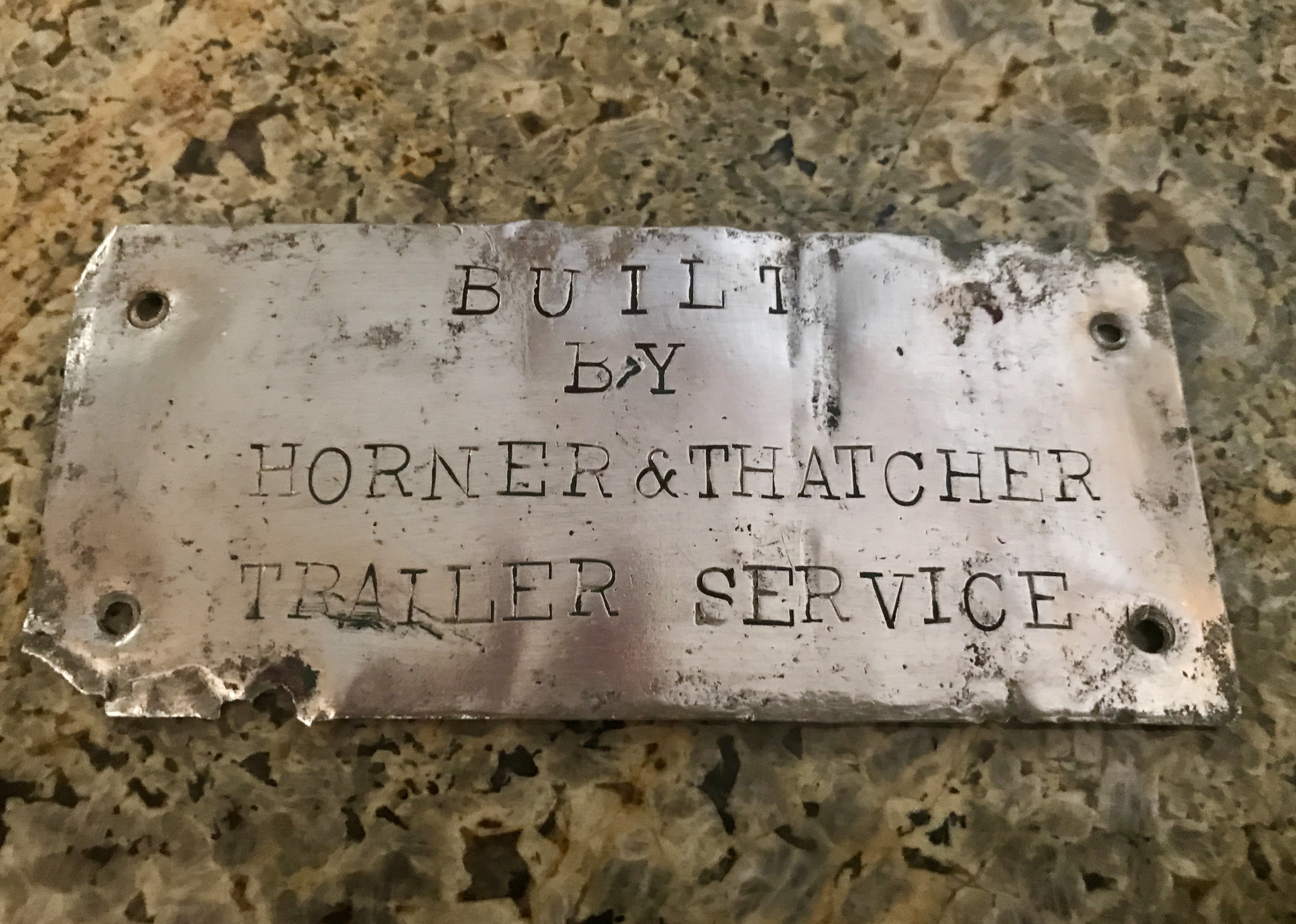
[The text of this article appeared in the Vintage Campers Trailers Magazine, Issue No.9; May/June 2020, which can be found by going to vintagecampertrailers.com; photos may differ].
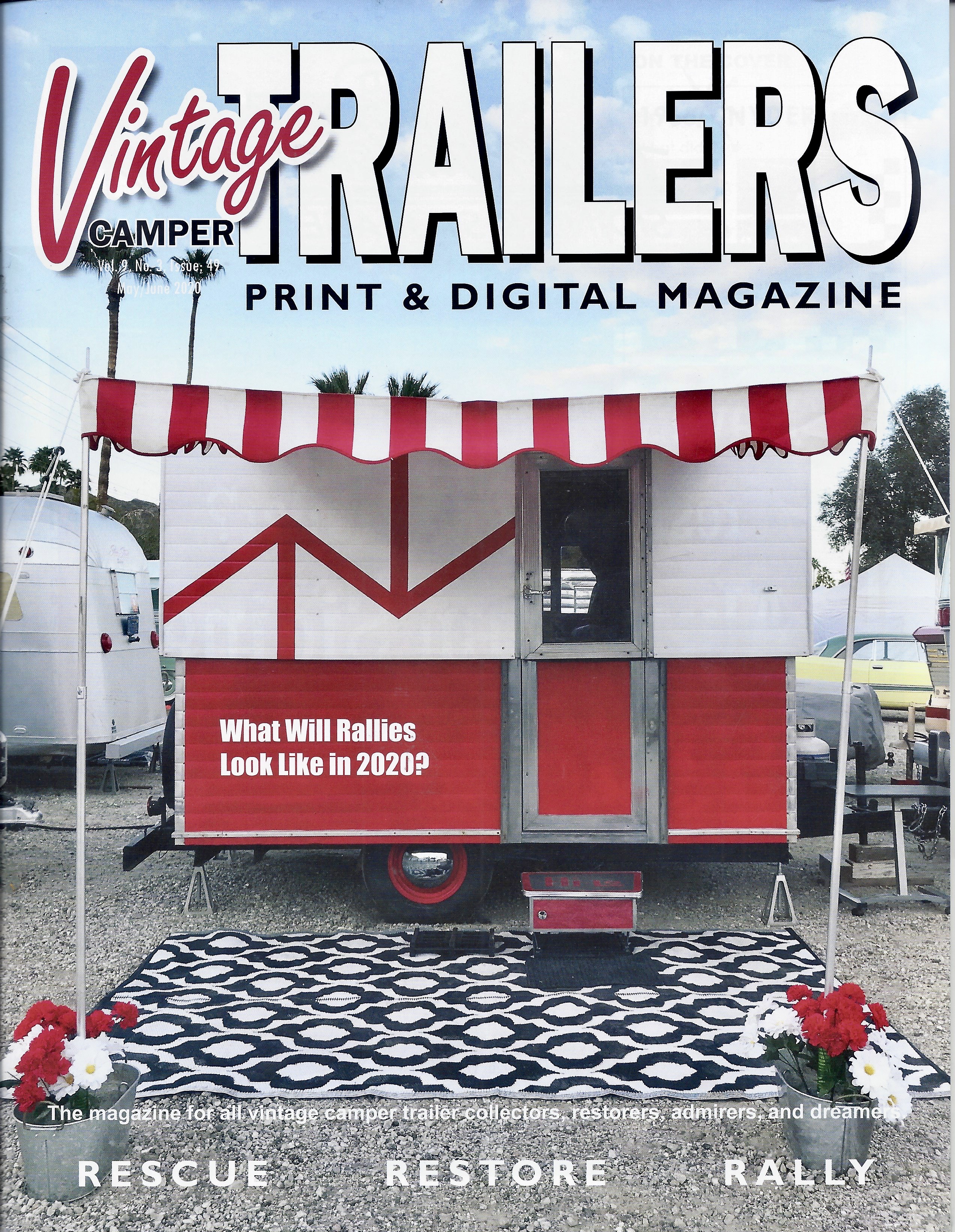
How do you write an appreciation letter to another who owns, respects and loves vintage trailers? How can you say thank you for such a generous and thoughtful gift? Well, let me tell you this little story about how we got a unique one-of-a-kind, small but mighty, trailer boat.
In 2015, we received an unexpected email from a vintage trailer couple we had met at the Pismo Rallies. Wayne and Kathy Ferguson owned a beautifully restored 1955 Aljoa trailer at the time; but they also had a vintage masonite-sided trailer boat which had a registration slip showing it was first registered in 1948. They purchased the trailer in 2012 in order to save it . . . and that, they accomplished! Wayne had planned to store it until they found a suitable home for it. However, it was damaged in transport to their home in Northern California. So this beautiful, surprise email message presented us with an opportunity to travel to pick up this potential gem. We told them at the time that we already had so many incomplete projects (sound familiar to anyone), it would be a while before we ever got to it — or maybe, not at all.
Wayne described this little trailer boat in his email as 14 feet long with a detachable boat, 5 feet wide and 7 foot 2 inches tall. He said it was constructed of masonite on the exterior and had a plywood interior. It had an area for cooking in the back. He found a tag on the tongue which said, “Built by Horner and Thatcher Trailer Service”. It had the oars, era boat motor, propane tank, stove and icebox. He stated, “It is a very special and one of a kind trailer. I have seen your trailer and truck and I think that it is excellent.” They offered the trailer and all the related accessories as a gift. “We think you have the skills to restore it.” He had a partial story on the trailer and many pictures to share and give to us. The only thing that is greater than this trailer, are the folks that gifted it to us! Thank you, Wayne and Kathy, it is an honor to be entrusted with this precious trailer. We only hope your expectations did not exceed our restoration . . .
What we do know is the trailer was purchased in 2012 by the Fergusons from Simpson's Garden Town Nursery located in Jamul, California. The nursery was described as a cool and popular drive-through landscape nursery. The 25 acres were laid out so that you could drive your car down the paths and load whatever you wanted into the trunk of your car and then pull up to a little check-out shack to pay on the way out. All along those paths old vintage vehicles and vintage trailers were parked. A customer once wrote, “There are like old pickup trucks from the '40s, and golf carts from about that long ago, and rusted-out wagons, and motorbikes, and vintage airstreams . . .” Simpson’s also had a barn museum of old cars. Another reviewer wrote, “And then, there’s this barn full of really tricked out museum-quality old cars. It’s like the Peterson Museum in LA, but if the Dukes of Hazard were the curators.” Located in Jamul since 1968 having relocated from Pasadena where it was started in1928, the landscaping nursery closed in 2011 due to the owners' retirements. Oh, how I wish I’d heard of this place years ago and could have experienced a visit to the landscape nursery.


We traveled north to pick up the trailer boat. Wayne and Chuck put the trailer boat onto a car trailer, duct taped the tarp and tied everything in place. On the way home, we had to stop 6 times to fasten and keep it all together. Masonite pieces seem to challenge you when transporting them. Once we got it home, it was parked in a backyard carport for a couple years while Chuck completed another masonite trailer project.
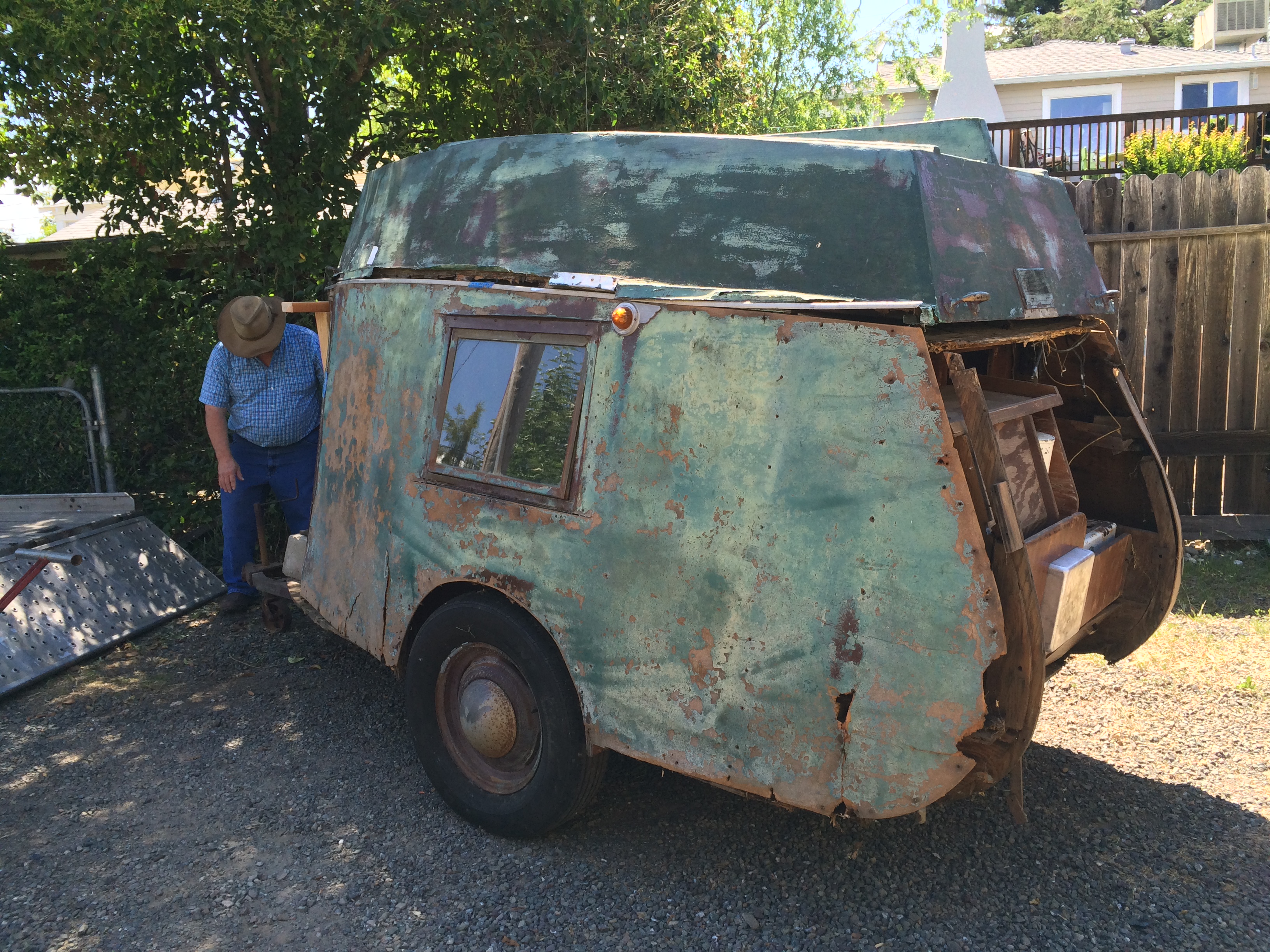
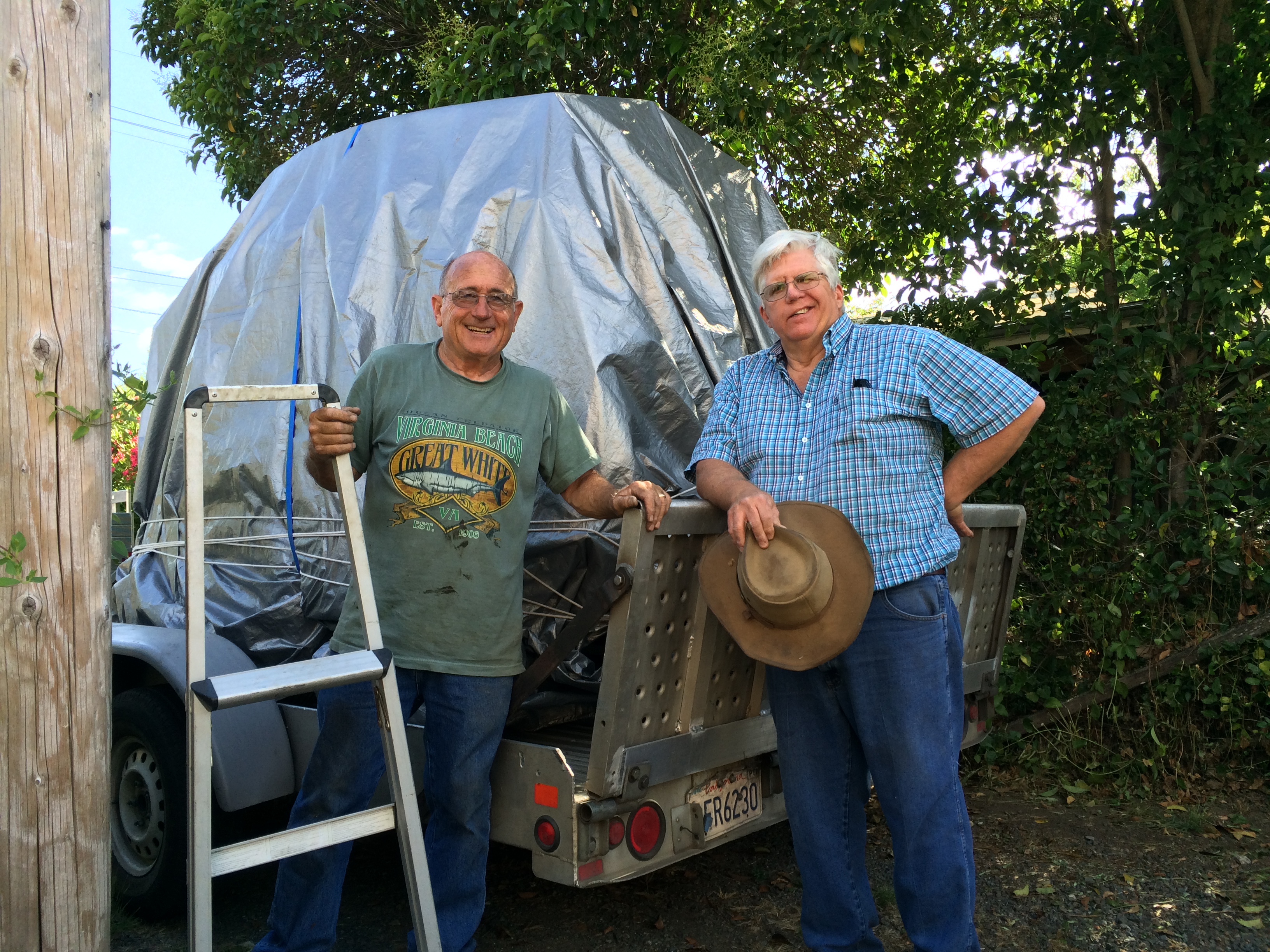
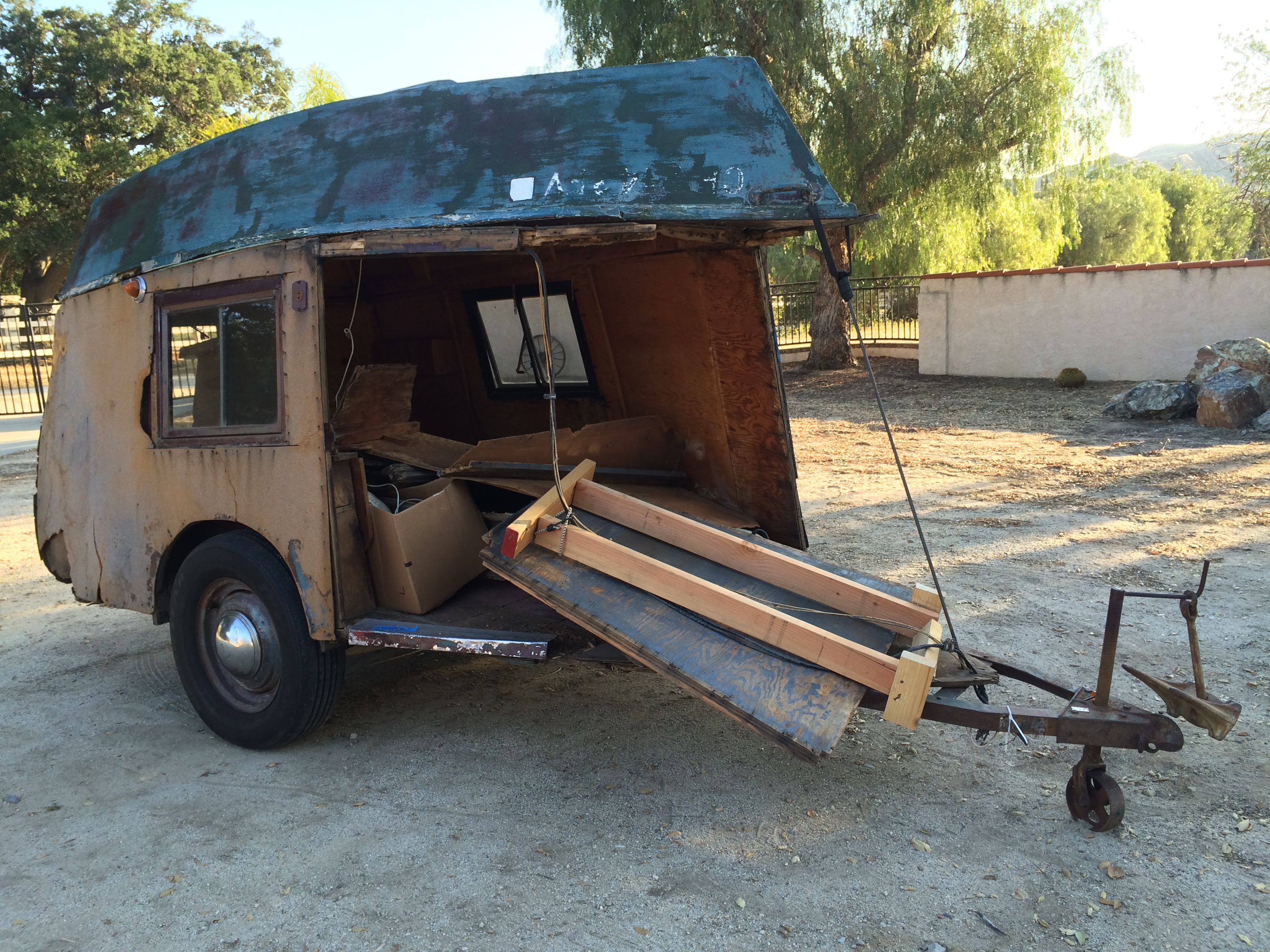
Well, you could guess what happened next. In late 2017, we brought it to the front carport to begin its restoration. Chuck first began working on the boat so that it would fit correctly onto the trailer top at a later time. The ribs and hull wood sides of the boat are original. The gunwales (pronounced “gunnels”; the top edge of the boat) had to be replaced. The original boat mount on top of the trailer upon which to rest the boat is still there. We’re still trying to decide if the trailer was built to carry the boat, or the boat was built to fit the trailer. Chuck surmises the builders had the boat first (you know, the old chicken or the egg question).
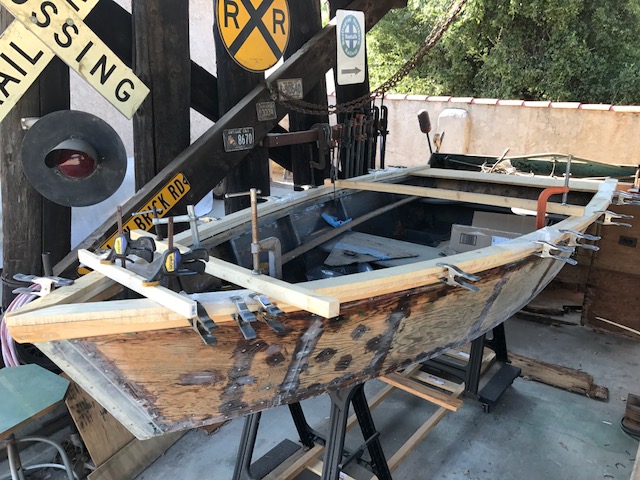


The trailer renovation portion began with a frame-off restoration to strengthen the frame and to preserve its original shape. Approximately 70% of the interior plywood was saved. The entire kitchen in the back was kept intact except for the rear hatch door.
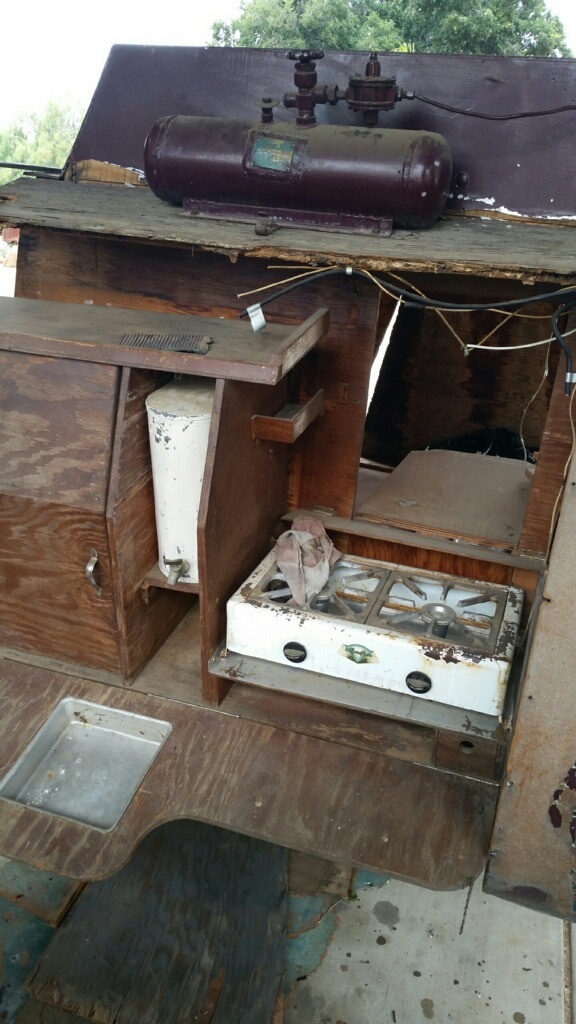
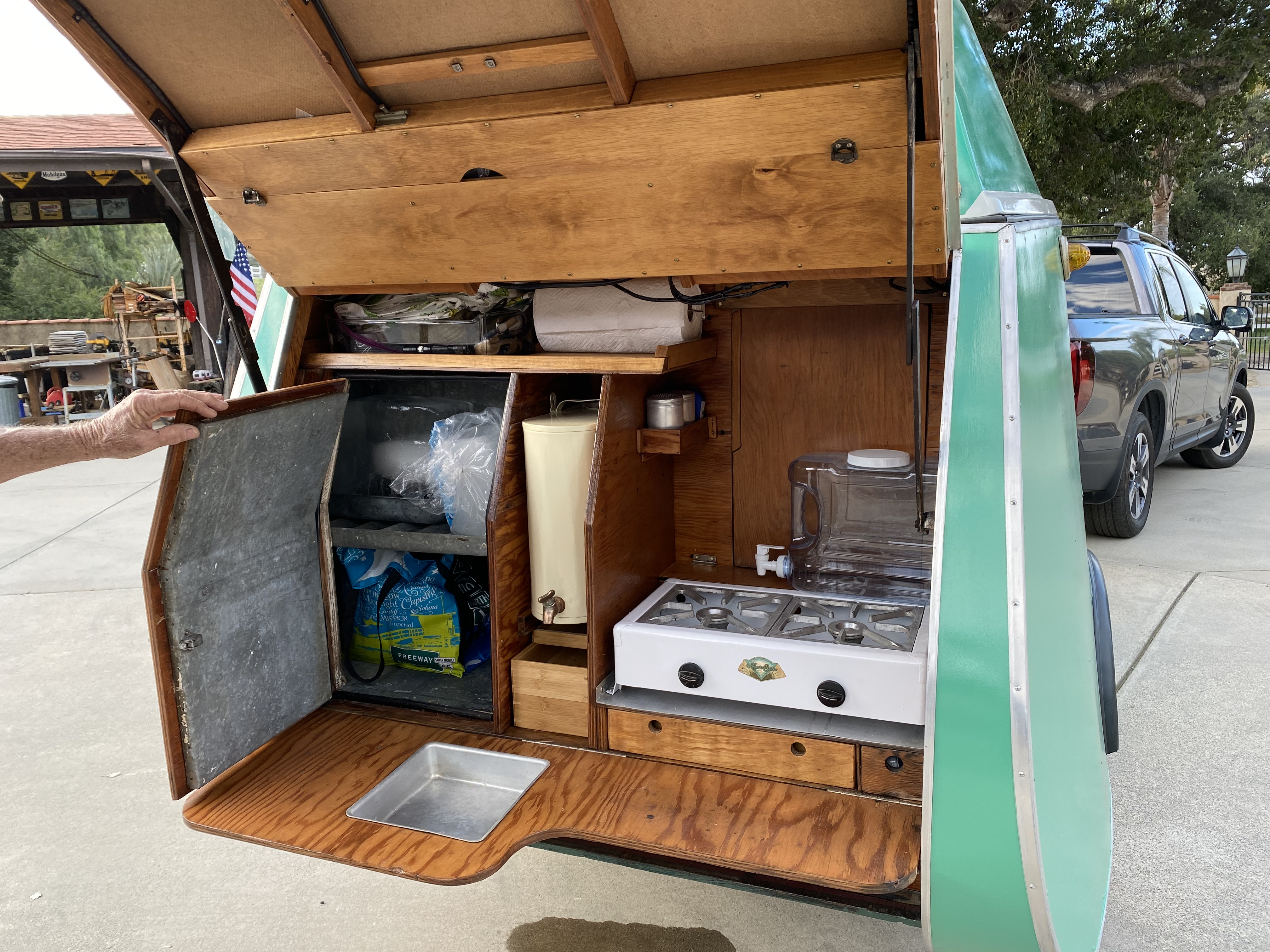
The interior has the original light sconces and bunk beds. Chuck added removable chairs for taking refuge inside the trailer on a rainy day. We already had the vintage chairs; he cut them down to fit onto the bunk beds and replaced the canvas. Yes, he sews, too, I don’t; however, I always make it clear to visitors that I feed him while he does all the thinking, planning, organizing, building and completion of his projects.

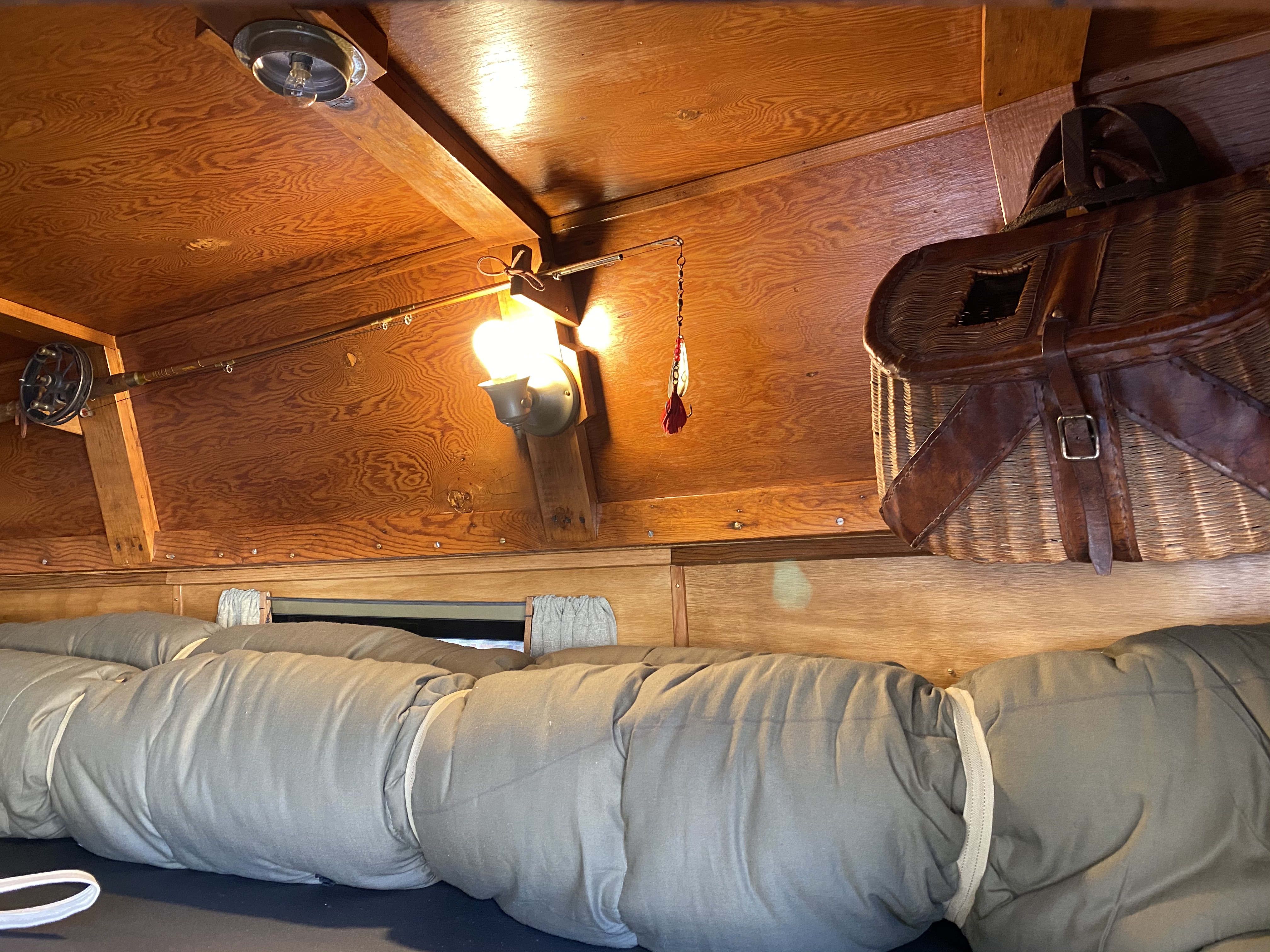

Chuck has been collecting fishing gear for years. My father was an avid fisherman who even built his own rods and fishing lures as a hobby. Adding fishing related items to the trailer we already possessed allowed us to reduce “treasure” clutter elsewhere.
Folks ask, “Does the boat float?” I’m going to say absolutely (we have yet to put it into the water) although we plan to do it soon. Chuck’s goal is to catch at least one fish before dry docking this ensemble. The boat had remnants of a fiberglass coating, but we chose to keep it all wooden.
We were able to get the trailer and boat re-licensed in 2019 without any hitches (an unintentional pun) thanks to the Ferguson’s retention of older paperwork. The trailer registration was last renewed in 1997.
It was such joy to see all the elements of this project come together. It fulfills the aesthetic, creative and pleasure portion of our brains (sure, at our age we’ve lost some brain cells but the cells still functioning need nourishment) . . . Chuck’s the artist, and I’m the enthusiastic supporter cheering on our vintage trailer projects.
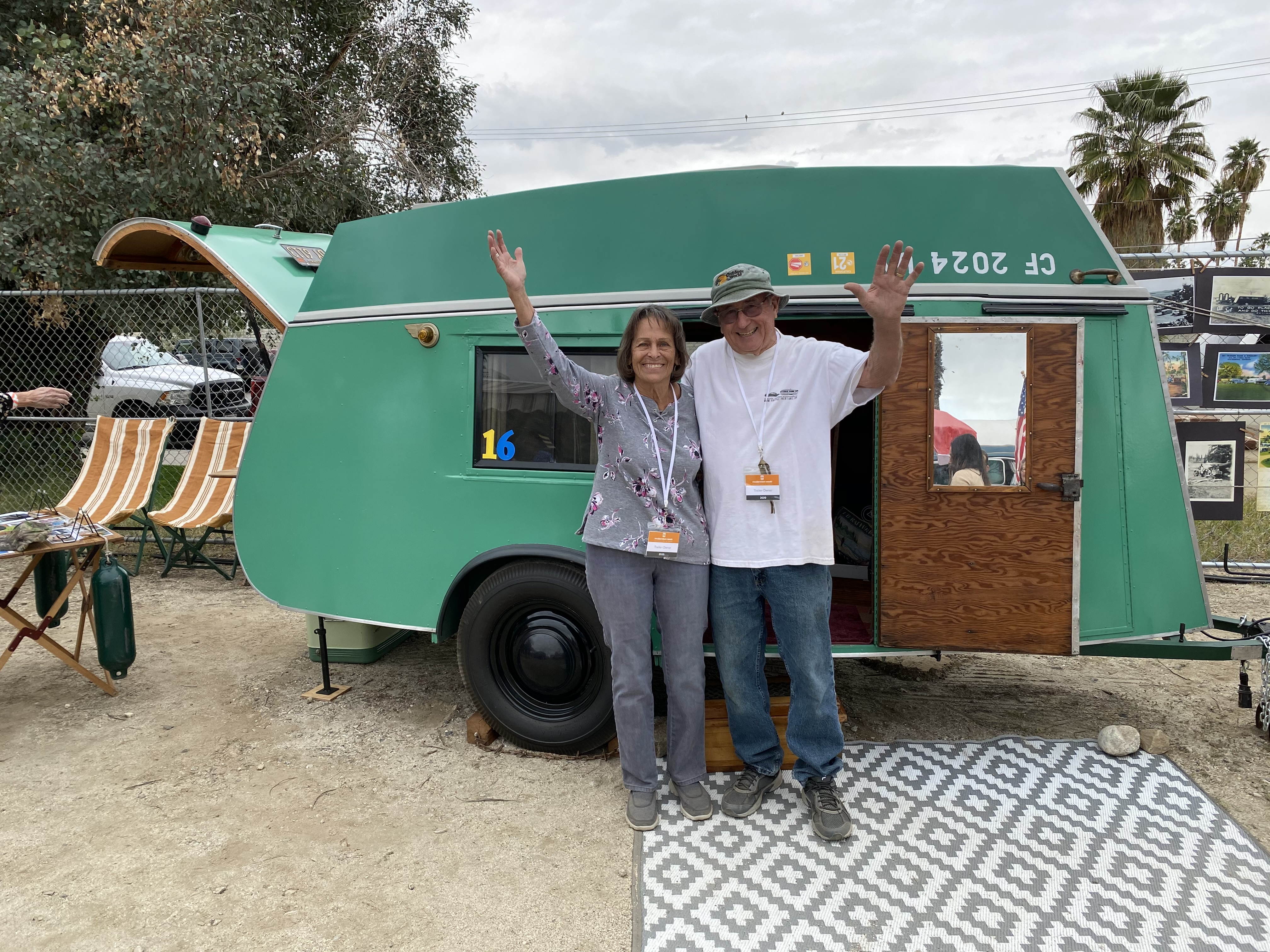
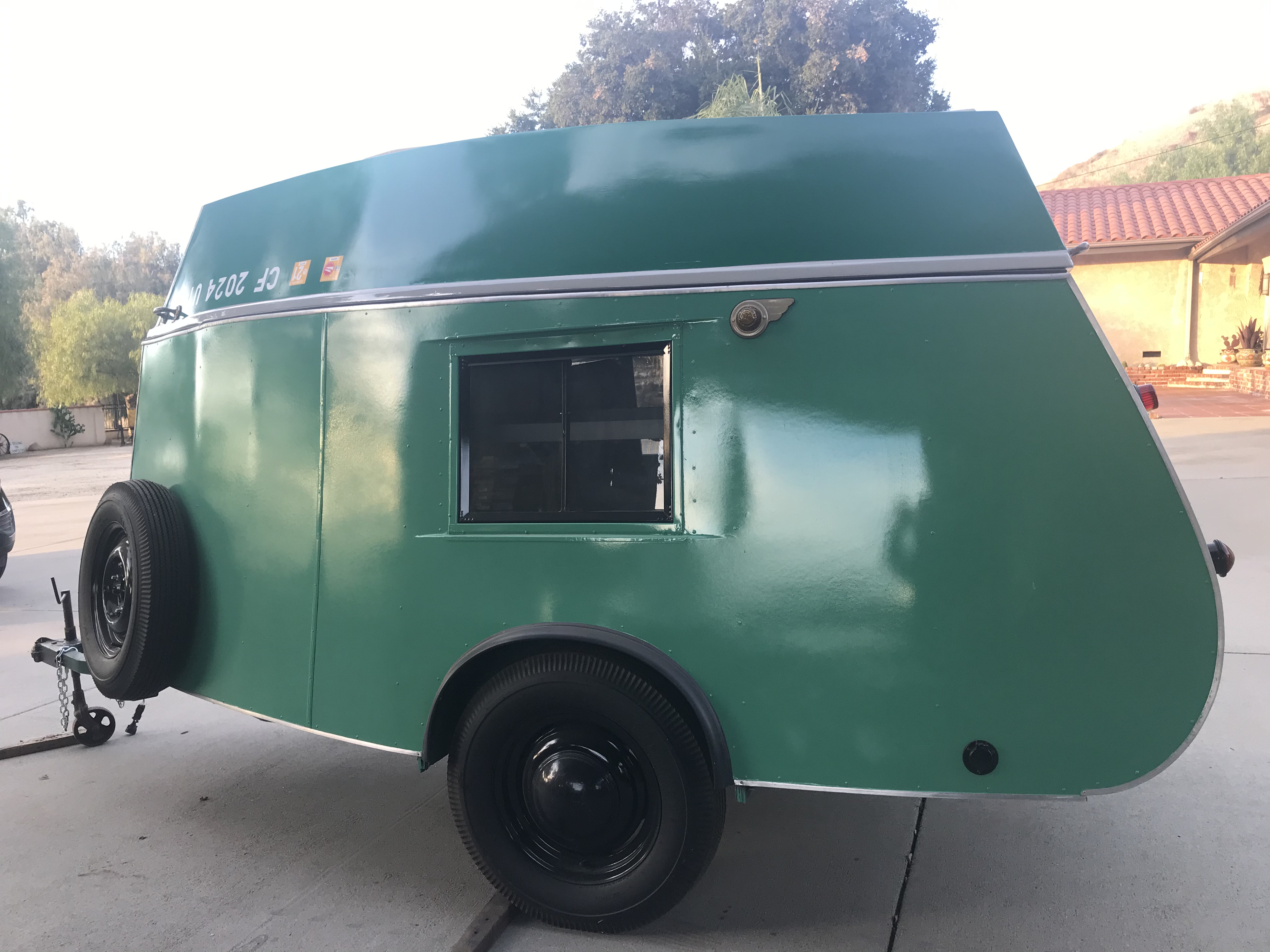

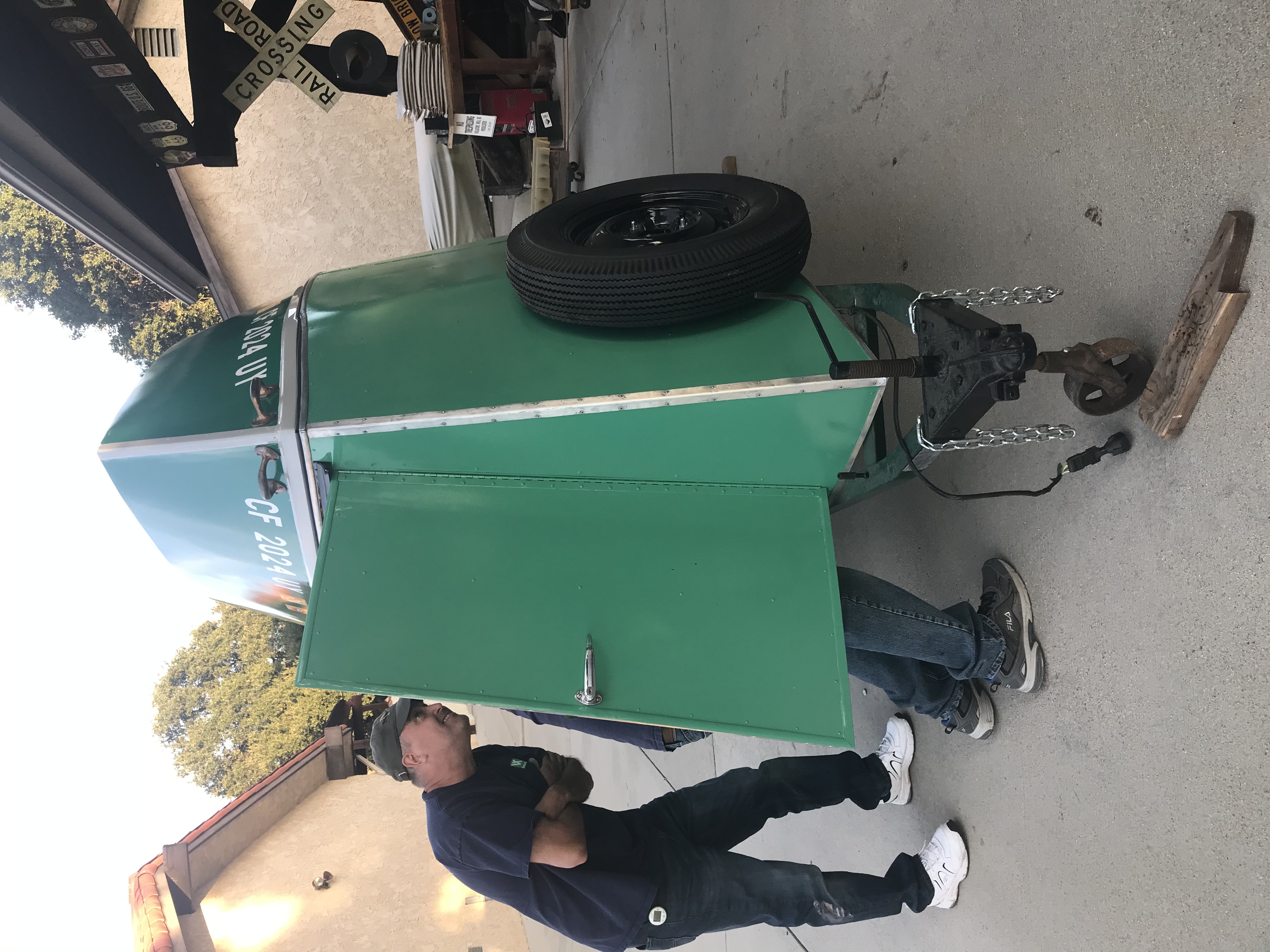
The Fergusons, now caretakers of a 1965 23 foot Boles-Aero trailer, are a perfect example of warm, kind and generous trailerites. We truly appreciate them. Wayne and Kathy, we salute your contributions to keeping vintage trailer history alive. We are truly proud of sharing and being a part of your history. Here’s a hug and a thank you!
More pictures:

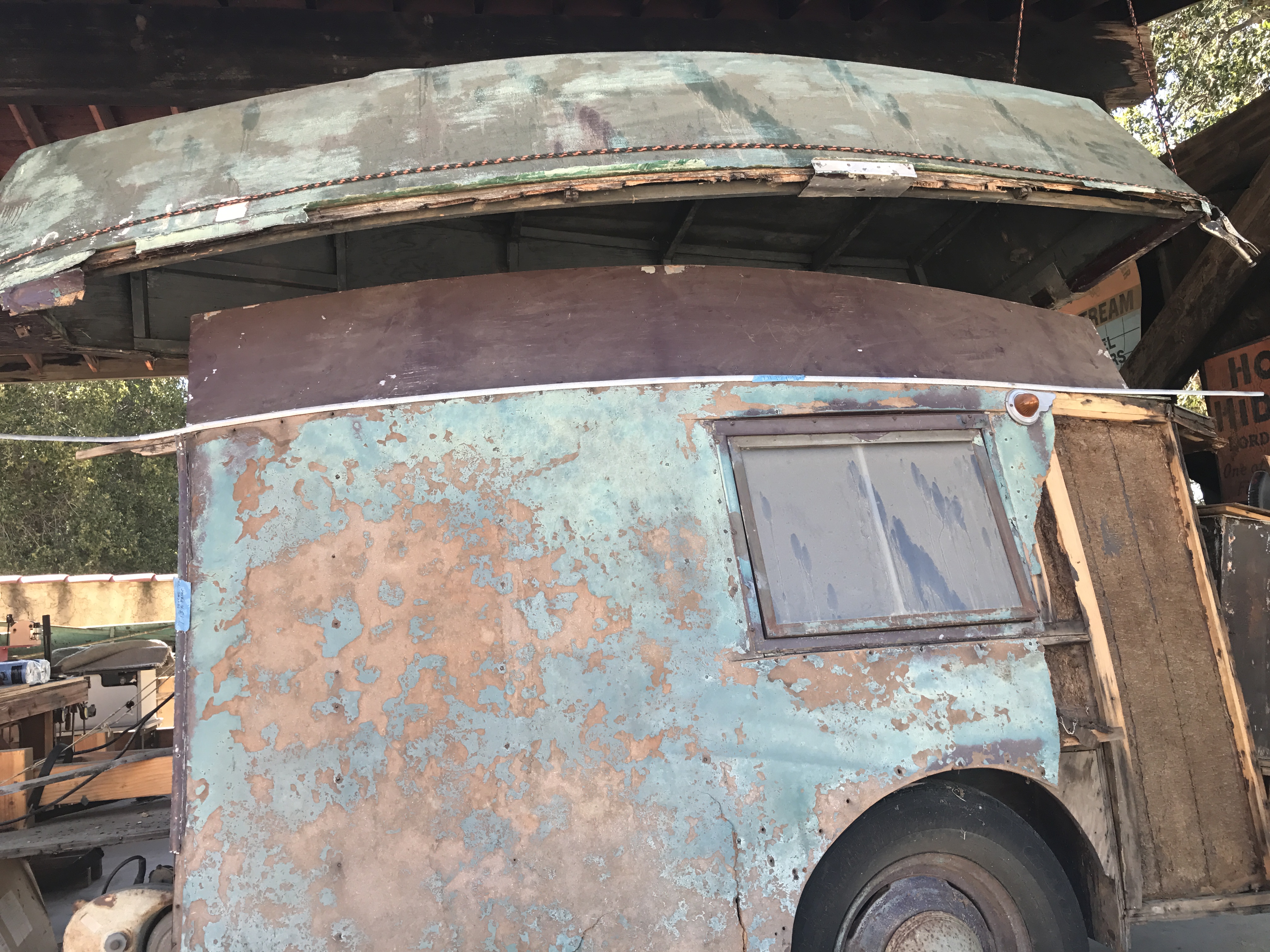
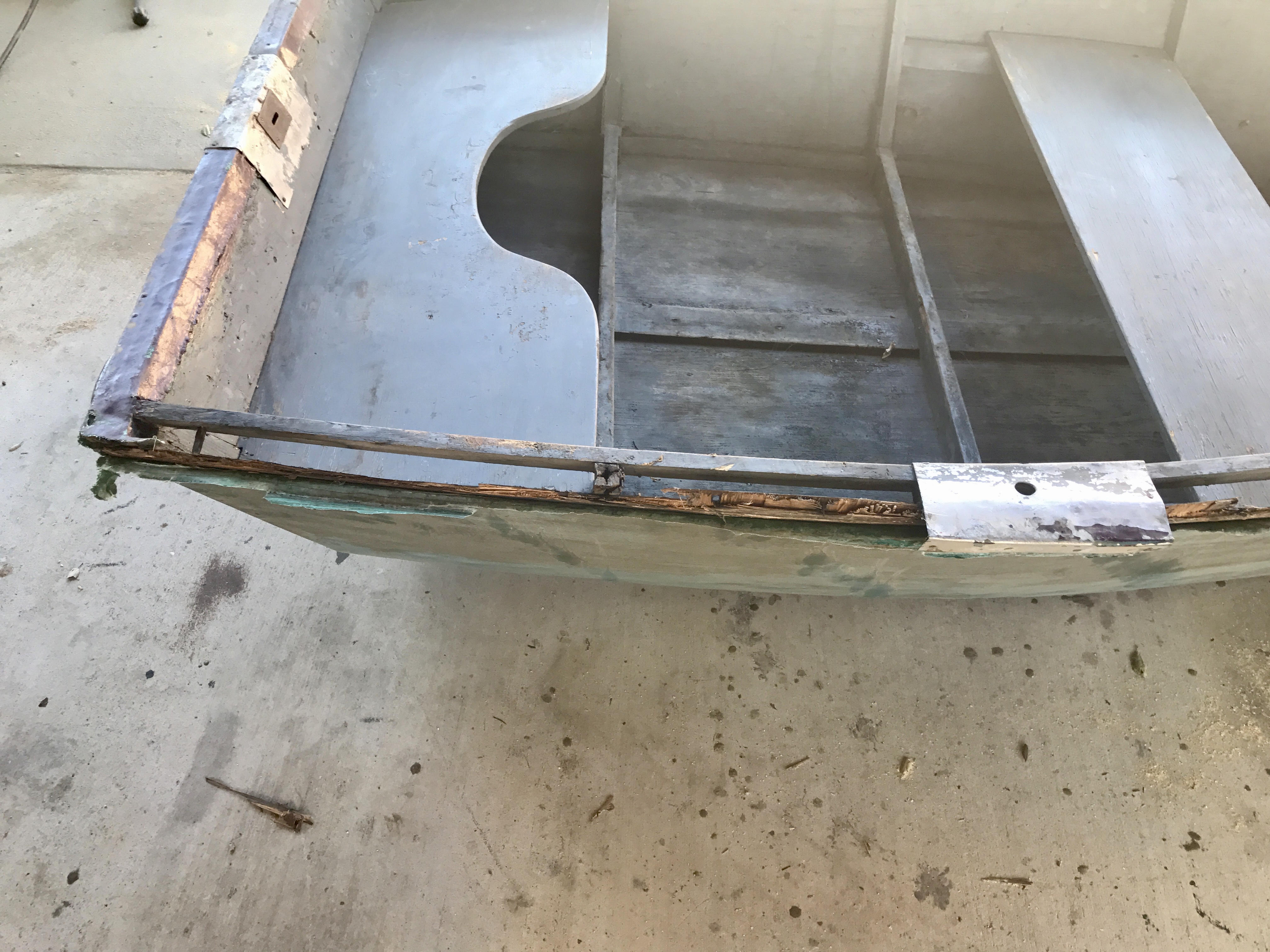
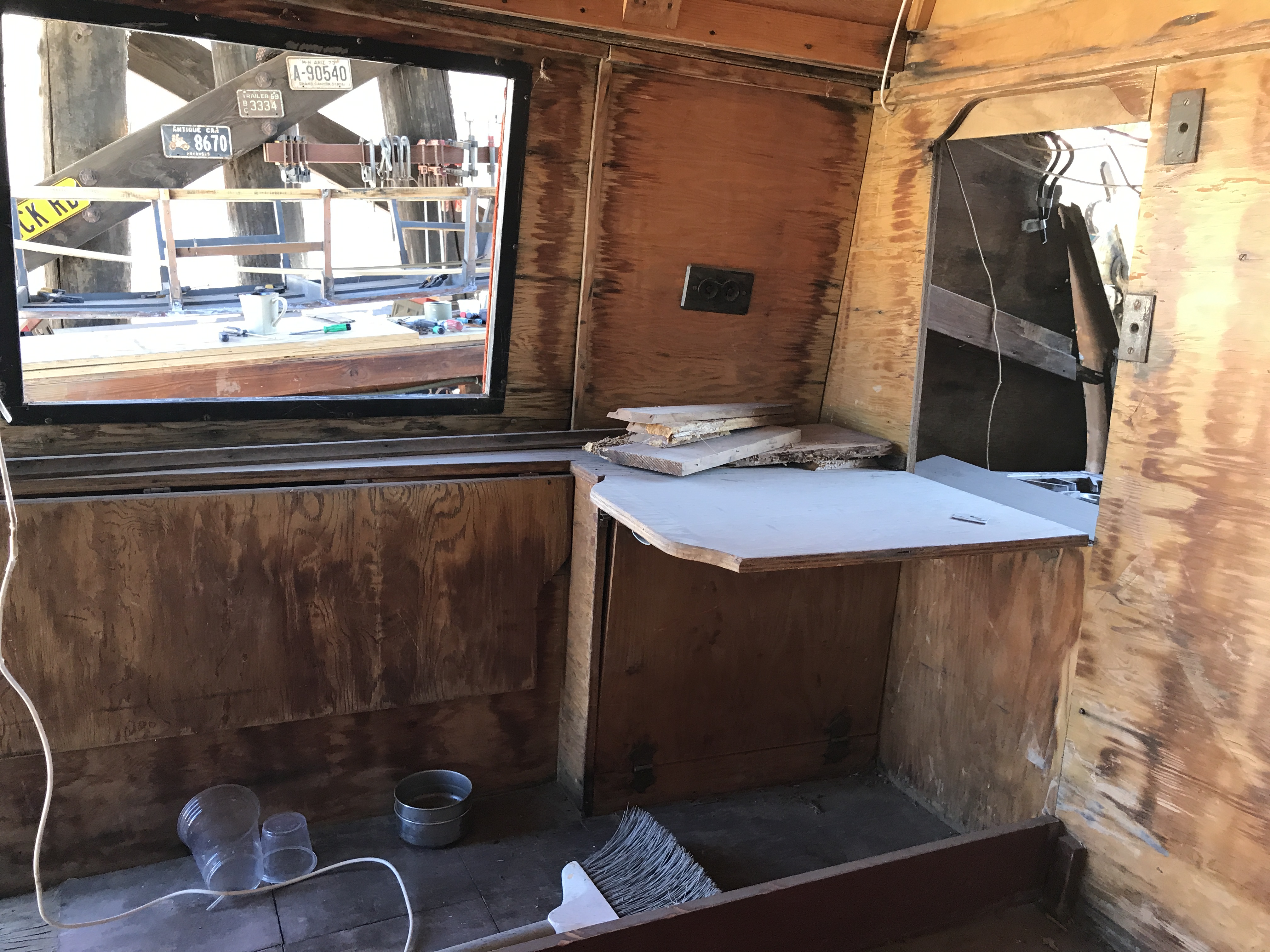

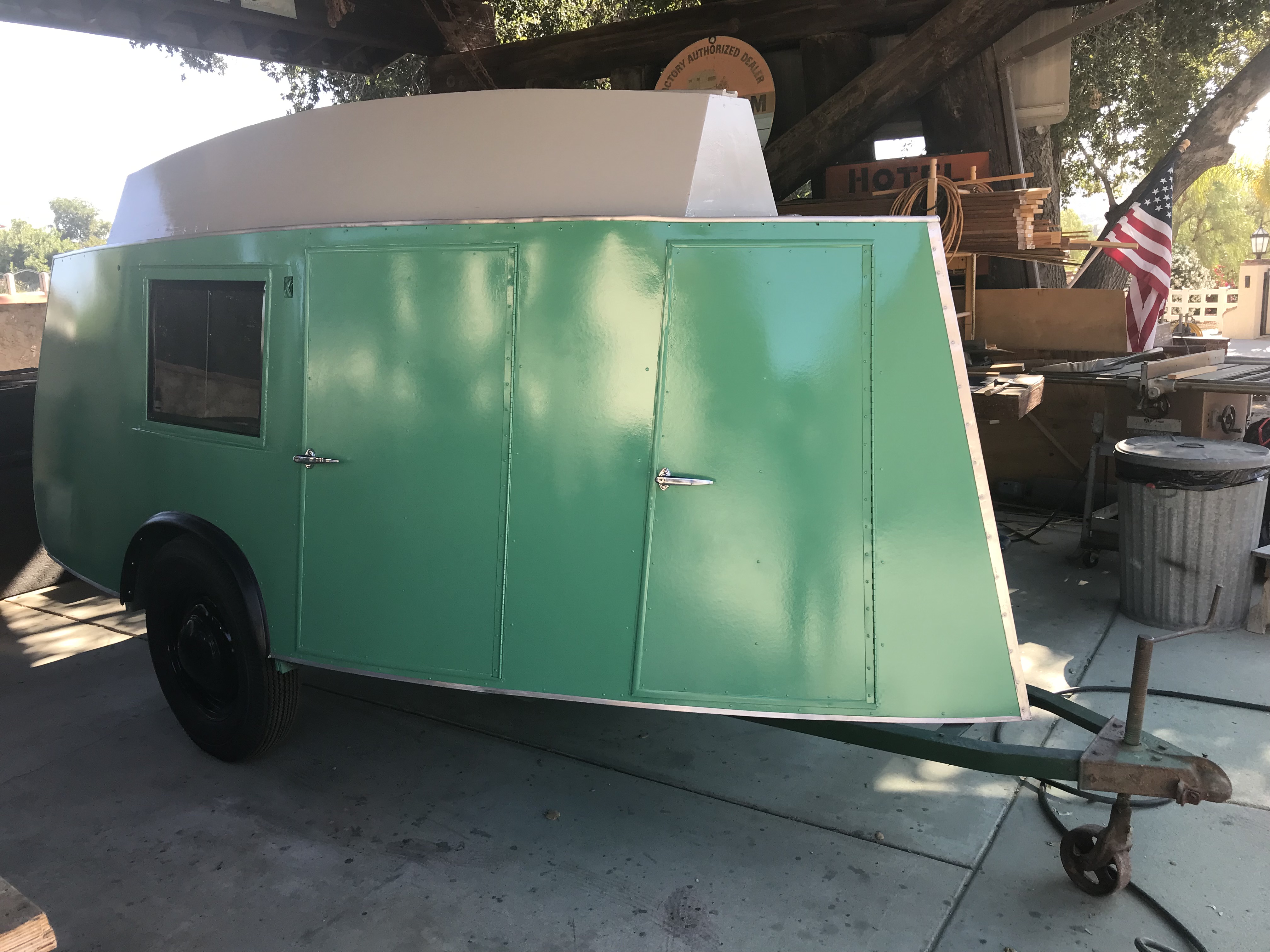


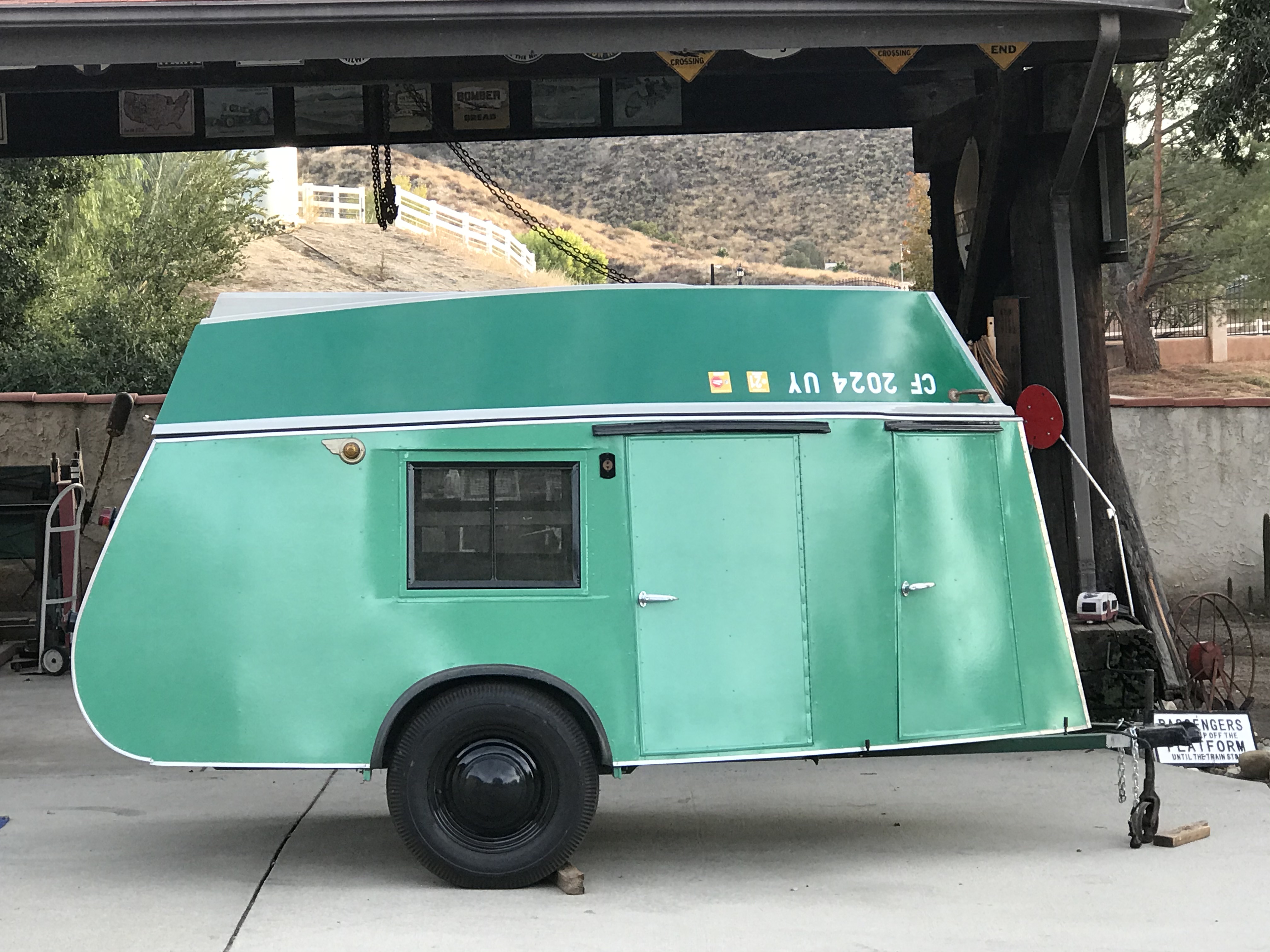
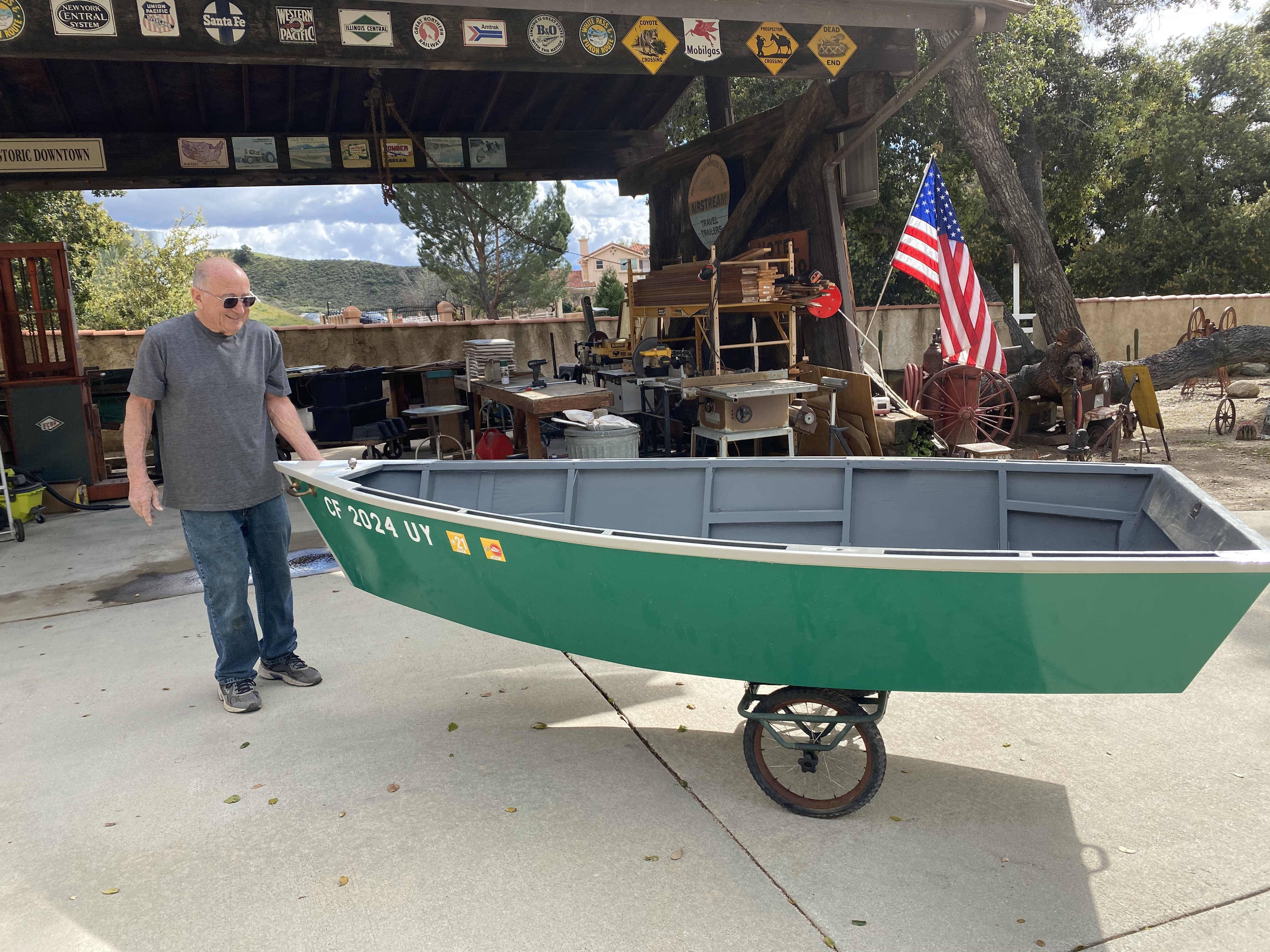
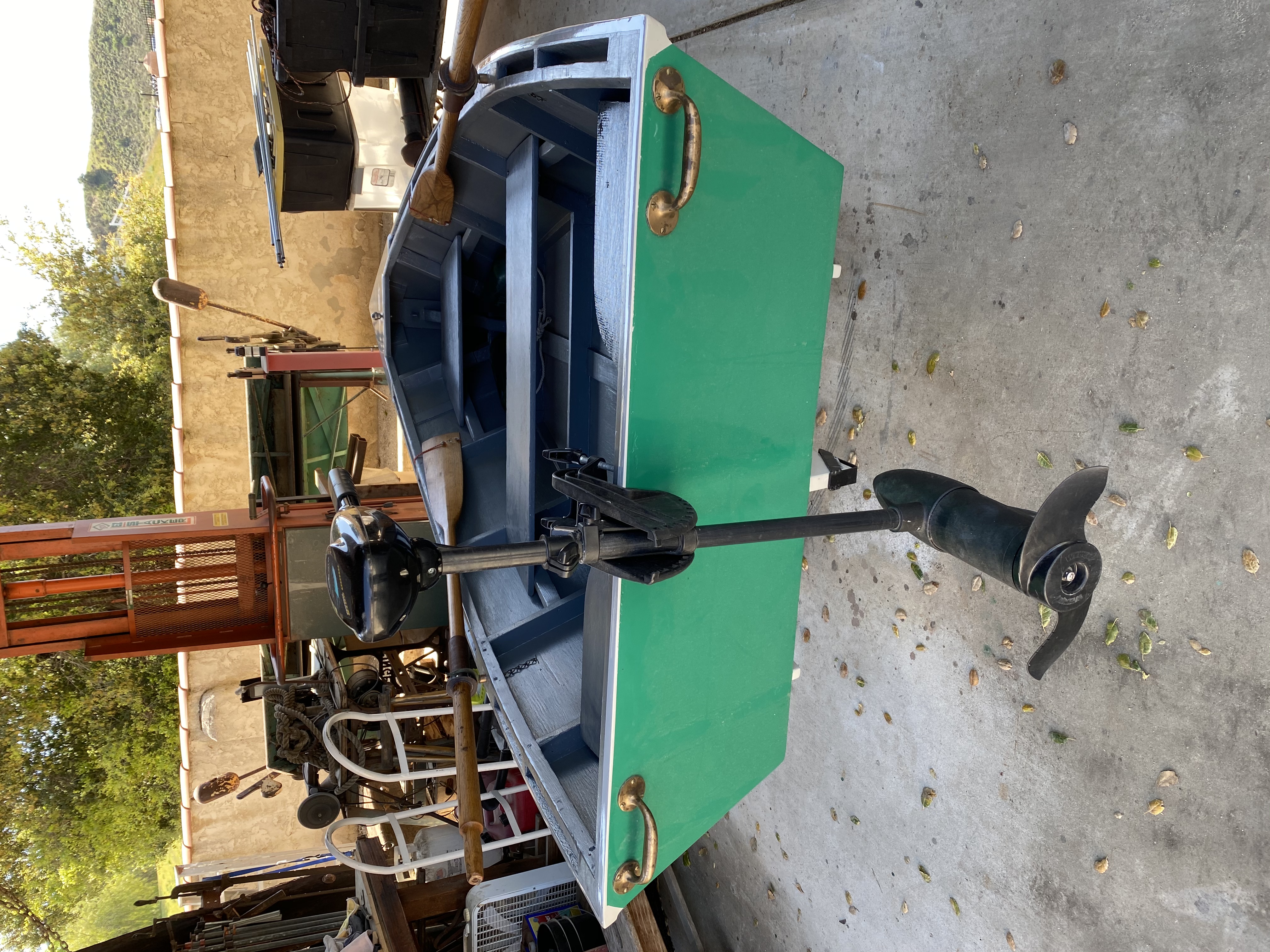
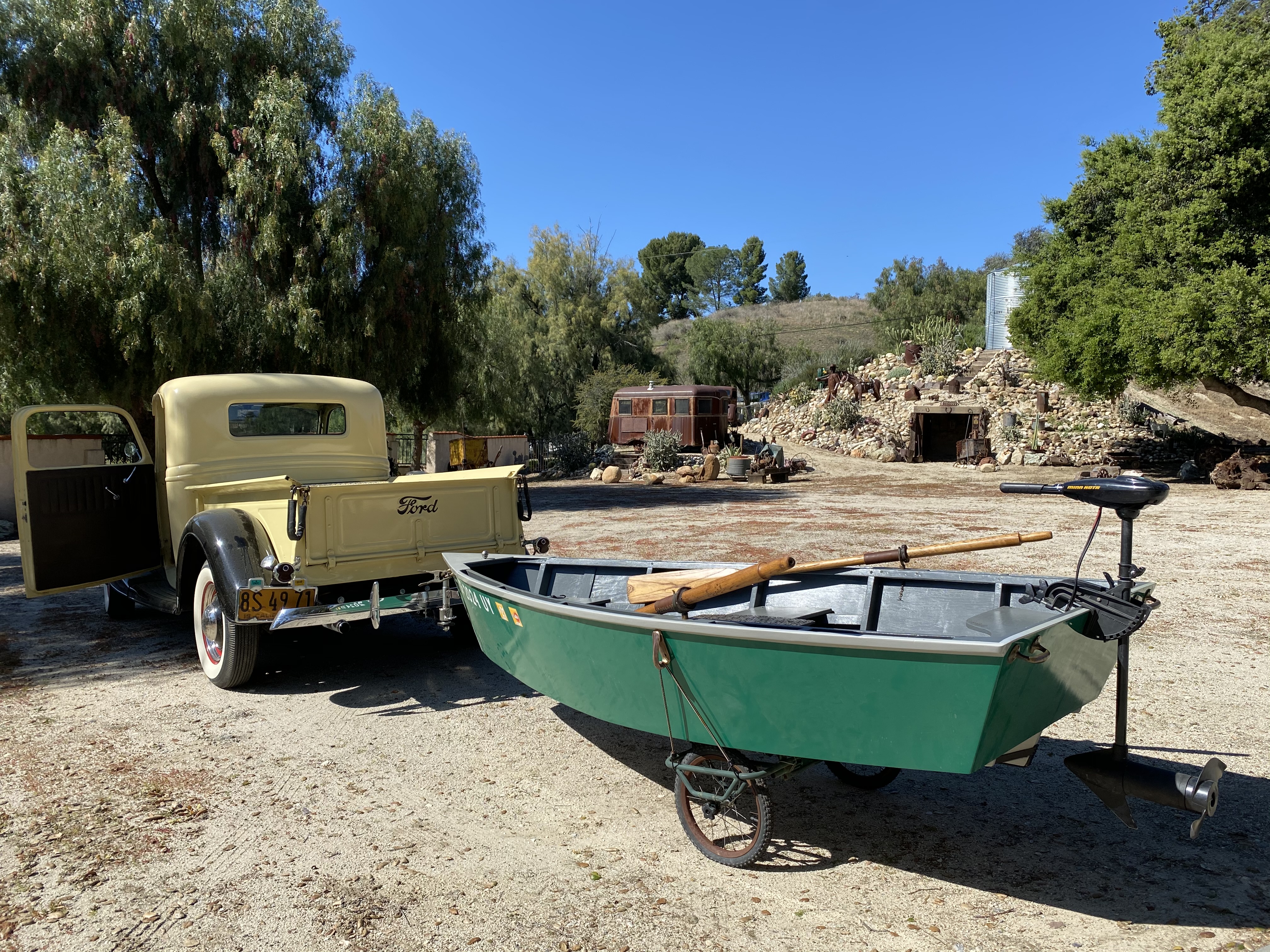

Let's Go Camping!!!
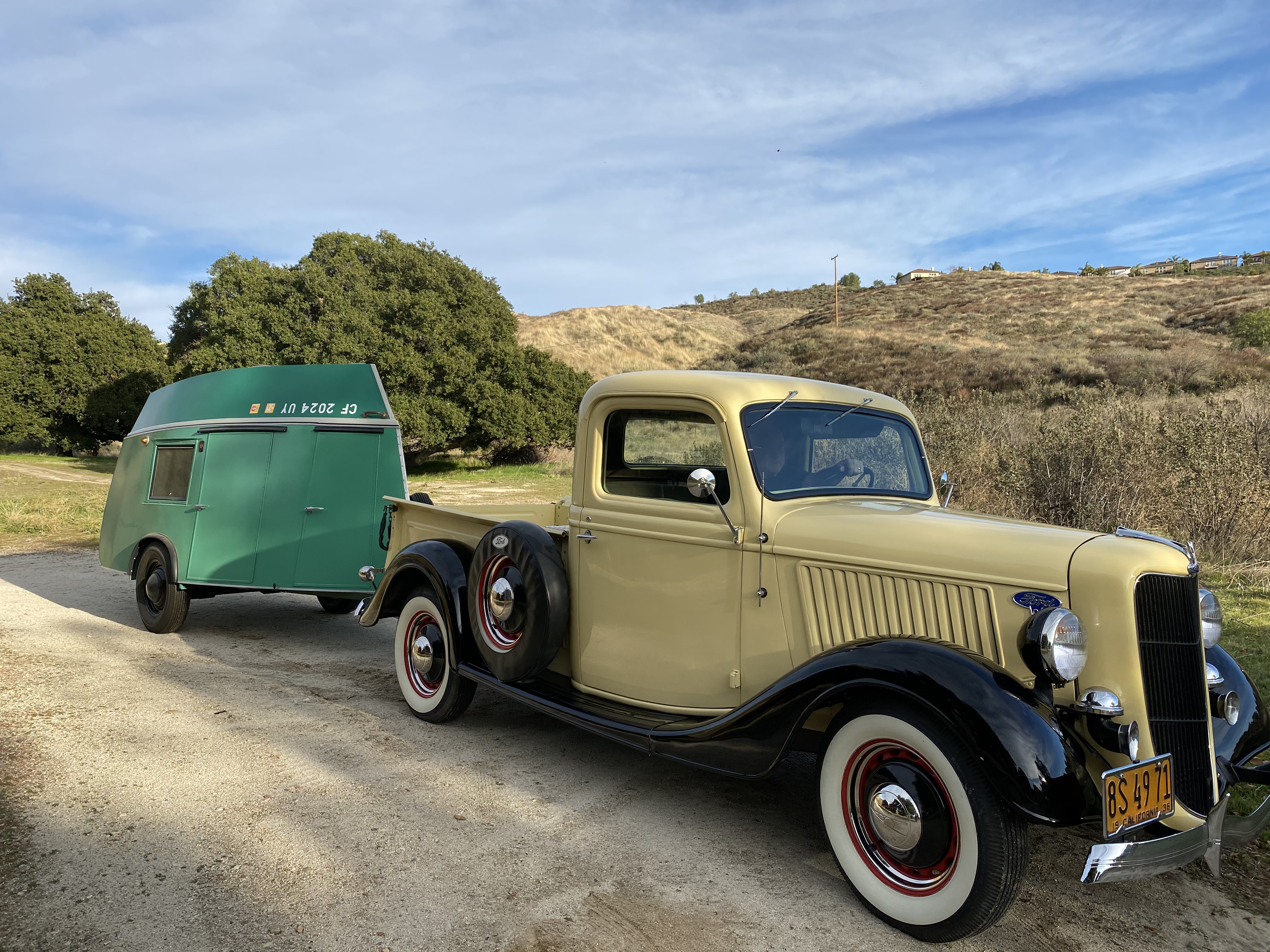

************************************************************************************************************************************************************
This update article on the 1948 trailer boat appeared in the Vintage Trailer Magazine (Vol. 10, No.3,Issue 45) May, June 2021. Some pictures or words have been added or changed. . .
Part 1: 1938 (COE) Water Pumper Fire Truck . . . Part II: 1948 Horner & Thatcher Nomad Trailer Boat Update
A BIT OF LUCK AND PERSEVERANCE HELPS DOCUMENTING A VINTAGE TRAILER AND TOW VEHICLE
Connecting the Dots — Achieving a Mixture of Luck and Success in Documenting a Vintage Trailer and a Vintage Tow Vehicle
Part I: 1938 REO (COE) Water Pumper Fire Truck
Did you ever play the game “connecting the dots” when you were young and a shape or scene appeared? In some ways we are still playing this game as we strive to learn the history of some of our tow vehicles and trailers. Every vintage trailer or tow vehicle has its own story; wouldn’t it be nice if they could just tell us their past — or is the research an enjoyable part of the discovery? We can sometimes accomplish research on the internet by posting pictures and stories or having our vehicles or trailers appear on vintage trailer sites or magazines. The information seems to make an appearance when least expected and receiving it is so exhilarating and appreciated.
Chuck has always been into working with vintage, classic and antique vehicles as a side interest. We purchased our first unexpected vintage-to-be tow vehicle in 1999 at the Rose Bowl Swap Meet in Pasadena, California. A vendor was selling vintage Hawaiian shirts out of the bed of an interesting truck which had a scribbled “for sale” sign on a piece of cardboard. We quickly agreed on a purchase price for the 1938 REO Cab Over Engine (COE) California Forestry Water Pumper Fire Truck. We did not know at the time this vintage vehicle would lead to becoming a part of the ever-growing vintage trailer family. We became interested in camping in a vintage trailer to be towed by the REO; but at that very moment, we did not realize the extent the direction of how our life experiences would change.

As a matter of record, I had been known to express to many that I would never own any trailer, new or vintage; because we wouldn’t be able to tow a boat, motorcycle, dune buggy or whatever recreational phase of life we’d be into at the time. It was always a tent, camper or motorhome up to that point. As the expression goes, “Never say never!”
REO began making many different trucks in 1909 which were known for their strength and durability. In 1895, Ransom Eli Olds made his first gasoline-powered engine and teamed with another to incorporate the Olds Motor Vehicle Company. While the automobile production stopped in 1936, the company continued to manufacture trucks. White Truck company bought out the company in 1957 renaming the trucks Diamond REO. The REO history is more than just this short paragraph and different sites showing the history of their automobiles does not necessarily coincide with their truck history.
Chuck began working on the REO. He changed the engine to a 395 small block Chevy with fuel injection, changed the steering, front suspension (3 inch drop spindle) and added a Gear Vendor Overdrive. He restored the wood stake bed, revised the corners of the bed for the lights, added an under bed gas tank, gas transfer tank and duel exhaust stacks.
We were at Camp Richardson at Lake Tahoe in 2004 camping with a vintage trailer group when we received a phone call from a high school shop teacher who heard the rumor we were looking for information on the truck’s history. After having the truck pulled out of the dirt where it was buried up to its axles in the storage yard, Ralph and his class put the truck on a 1978 Chevy chassis and put in a 350 Chevy engine with a 400 turbo transmission in the late 1980s/early 90s. They restored and painted the truck body. He then sold the REO to the man we purchased it from at the Rose Bowl. We asked Ralph if the original tanks were still available but they no longer existed. He sent us pictures of the REO’s “before and after”.


We were enjoying lunch with friends near Temecula while attending a vintage trailer rally at Vail Lake in 2006. A young lady stopped in her tracks. She told us her husband had worked on the REO as a student in his high school auto shop class and really, really wanted the truck; but, of course, he was not financially able to do it at the time.
We began to realize all the “myths and legends” we were hearing about the truck’s past might actually be true.
We had the truck posted on our personal (amateur) website for about ten years. One day, we received an email from the San Bernardino CDF Museum Manager, Jarrel Glover, stating that he had been Googling for a 1930’s REO COE Fire Truck and found our website in 2010. He wrote, “ We had heard of the fire truck that was in the Fallbrook, CA resting place for old fire trucks and wondered who bought it.” Jarrel was surprised to see the truck still retained its water pump. He sent us two pictures of the Madera County fire trucks which were the only ones identified in the museum’s collection at the time. Also, the San Bernardino Museum supplied a list of five 1938 and 1939 REO’s that the CDF purchased. There is no way to tell from the list how many cab over engines existed. At one time, we were told the CDF purchased two REOs & three GMC trucks which were made into crew cabs in the 1930s. Our truck was modified in the Berkeley/Davis area according to a brass plate in the truck.
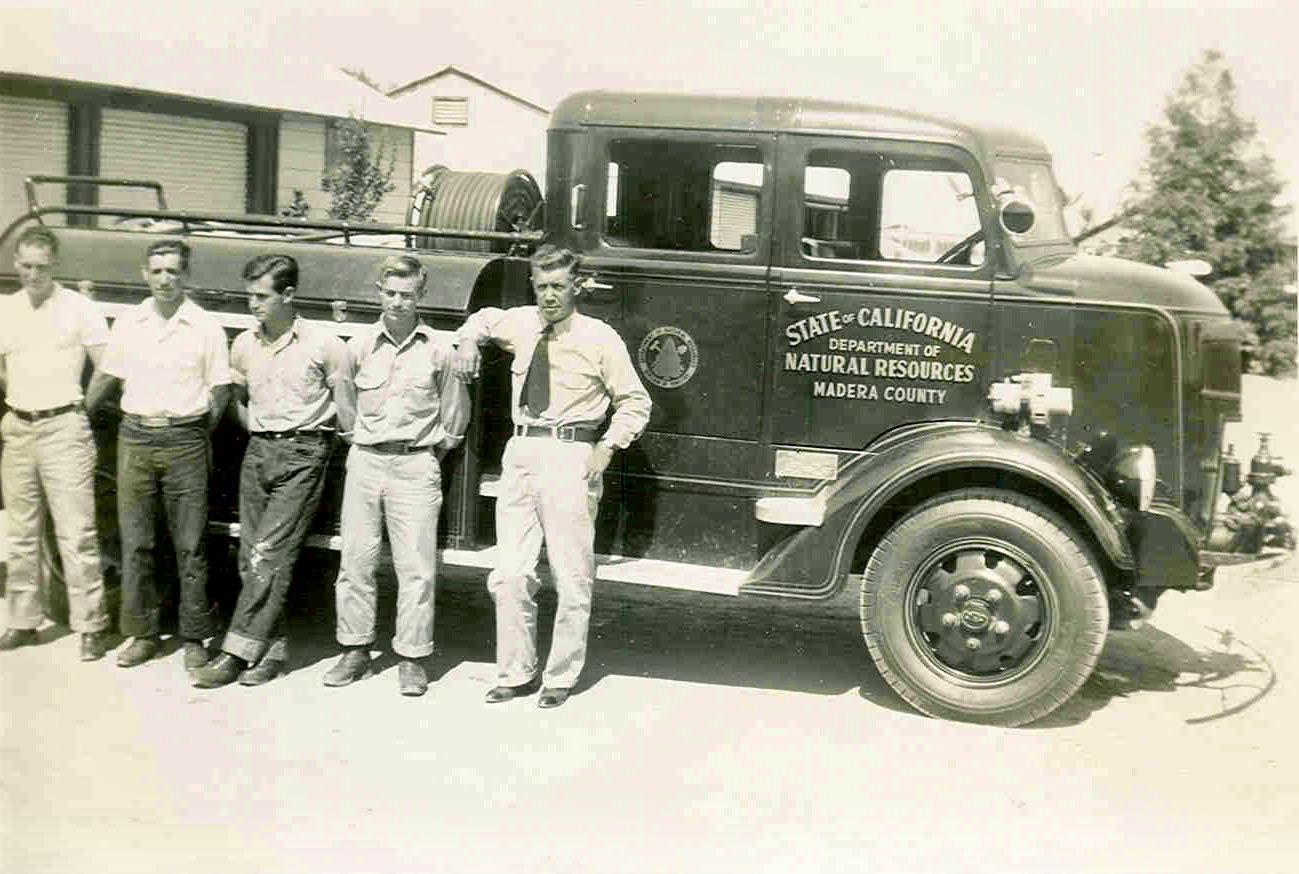
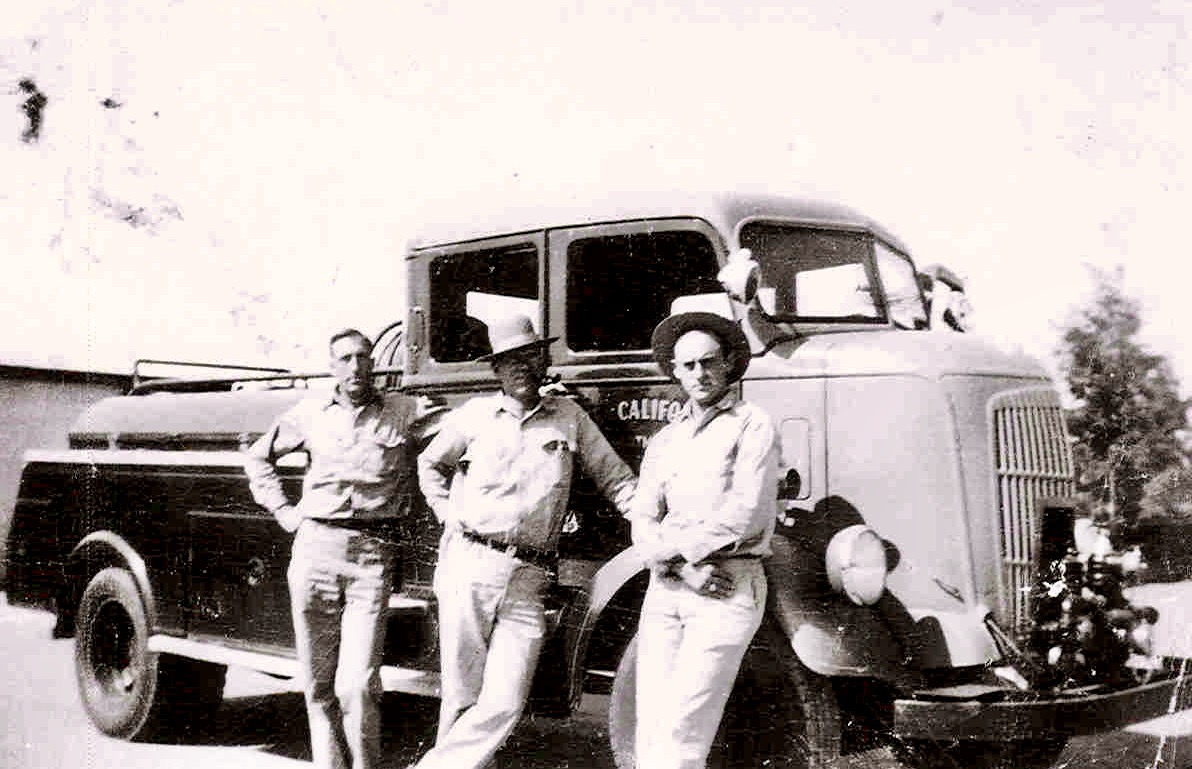
We visited the San Bernardino museum in 2011 and met some of the retired CDF firefighters and learned more history about their vintage fire trucks and the California Department of Forestry. Retiree volunteers help restore old fire trucks which were used by the CDF over the years. In 2014, the museum located another 1938/39 REO COE. We continue to appreciate their work and the information they share in reference to the history of our 1938 REO and other fire trucks.
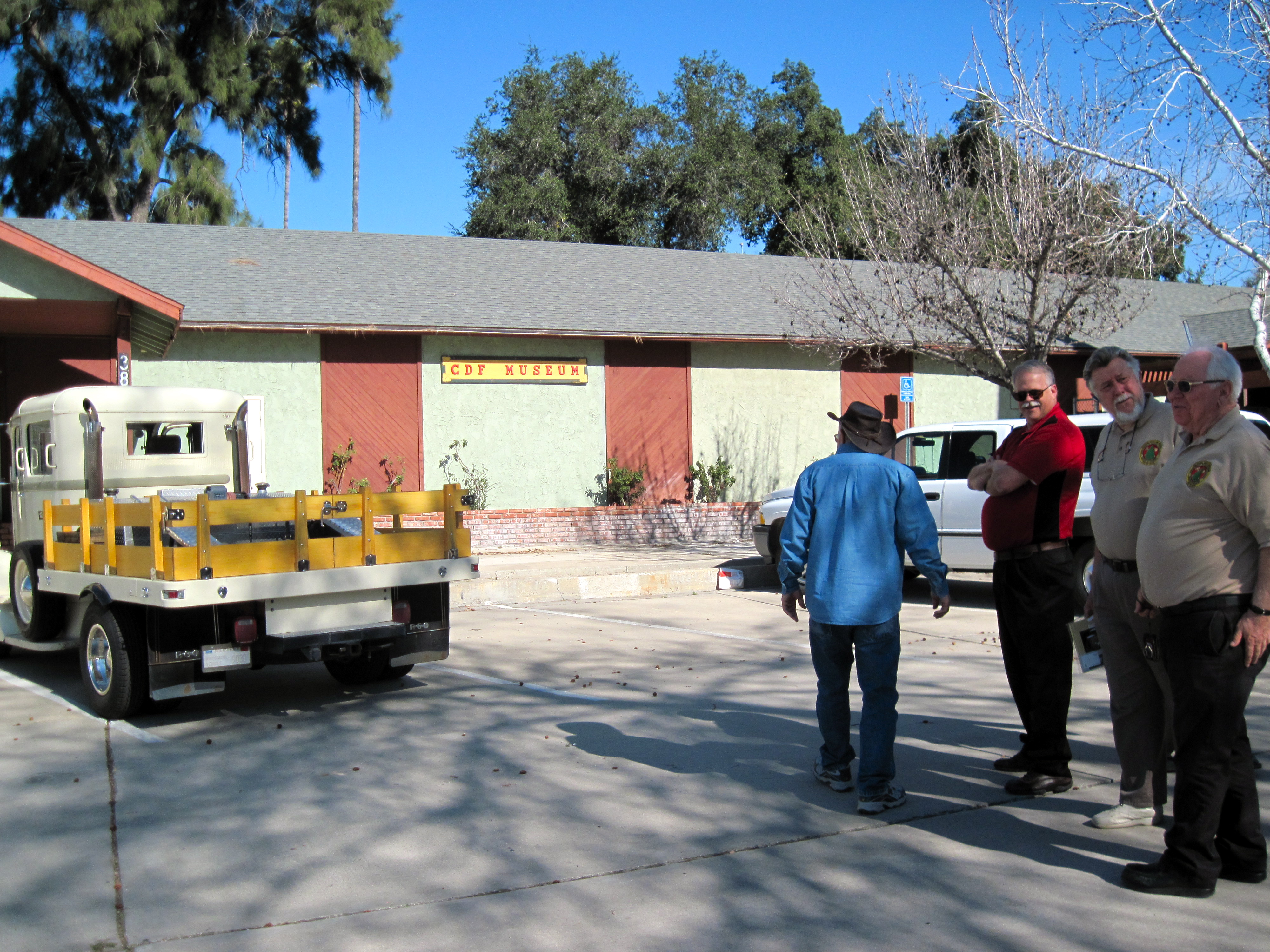
We did not receive these older black & white photos of our REO fire truck in the storage yard until 2015. I do not know what year these pictures were taken.
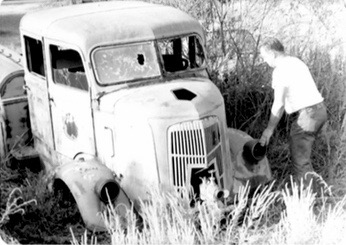
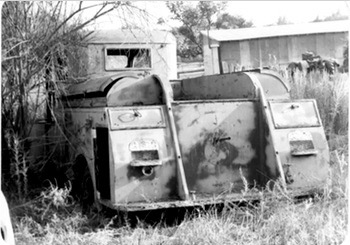
We are still driving and enjoying the REO.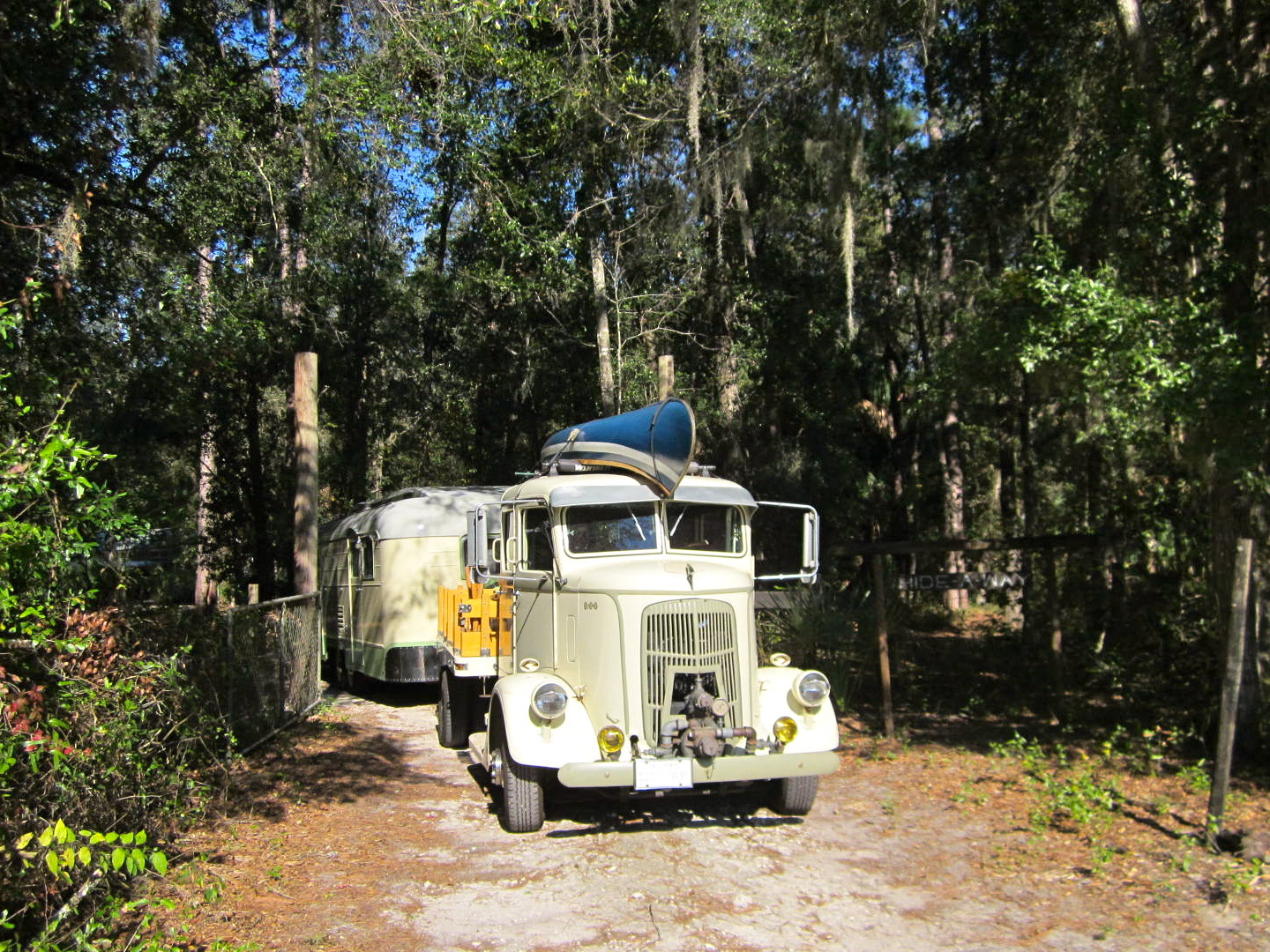
********************************************************************************************************************************
Part II: 1948 Horner & Thatcher Nomad Trailer Boat Update
. . . And now, for more information on our 1948 Horner and Thatcher Nomad Trailer Boat Prototype.
The original article appeared in the Vintage Camper Trailers Magazine (Vol. 10, No.3, Issue 55; May/June 2021, pp.32-37). Pictures and some text may differ. [vIntagecampertrailers.com]



We knew about the trailer’s history after the late 1990s (Vintage Camper Trailers Vol. 9, No.3 Issue, 49; pp.32-37) thanks to the Ferguson family; but due to a shorter article in a car magazine in its September 2020 issue, thank you to Paul Lacitinola, we were given a phone number to call John Smiraglia who expressed interest in contacting us. It turns out he worked for Horner for about 5 years and is still a friend of Horner’s grandson. He has since put us in touch with the grandson who provided us with two pictures of the Horner and Thatcher Trailer Service Shop and the earliest photos of the trailer. The shop began in 1947 for one year but in 1948 became Horner Golem. George Horner’s grandson, Steve Horner, had always heard of the trailer but never saw any evidence. He expressed excitement in seeing it “resurrected”.
He began to review his family slides . . . “Here is the latest. As I could blow these up I can now see that there is the Horner Golem address now on the truck in Pacific Beach, not the Spring Valley, original location.”
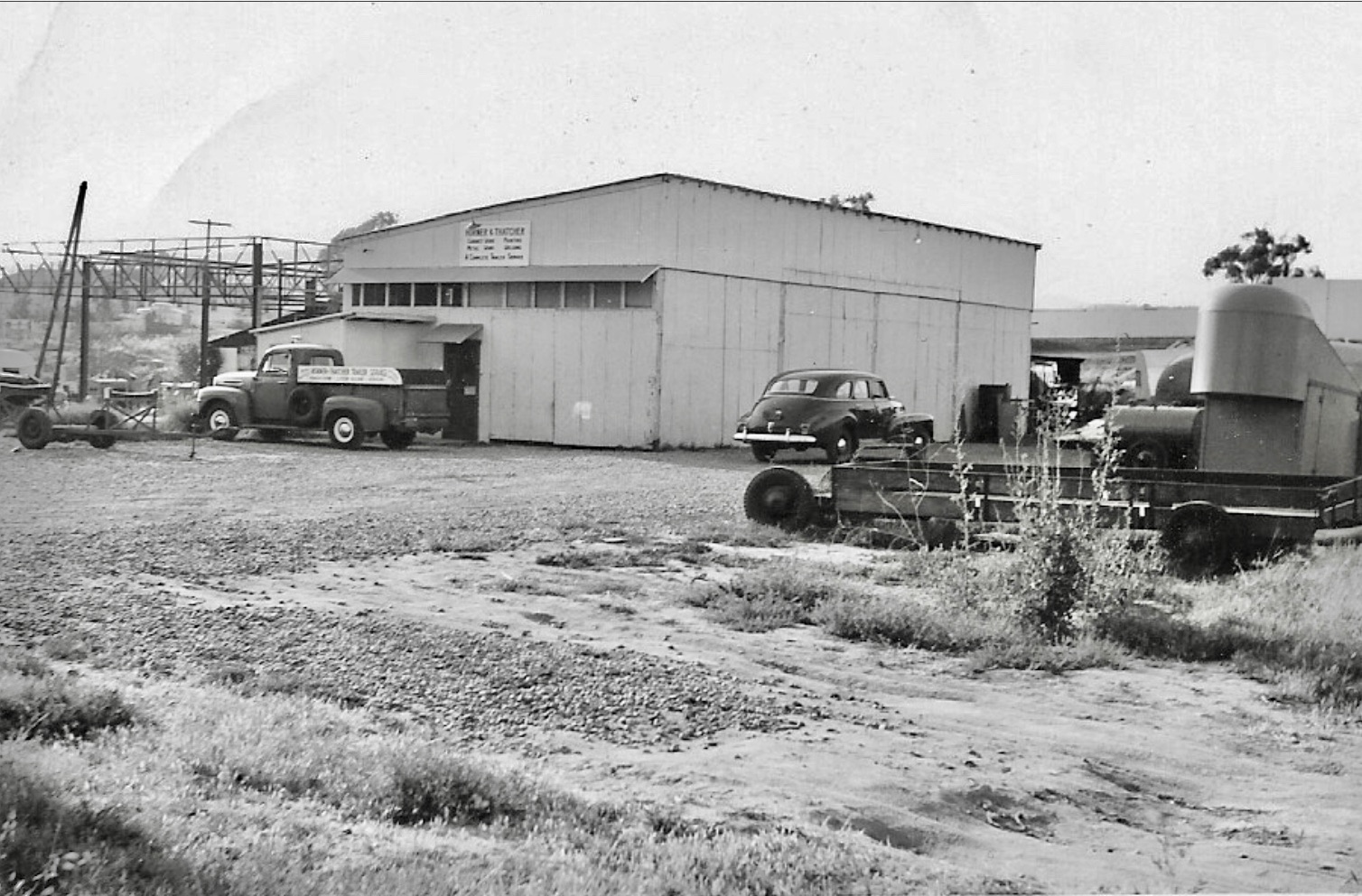
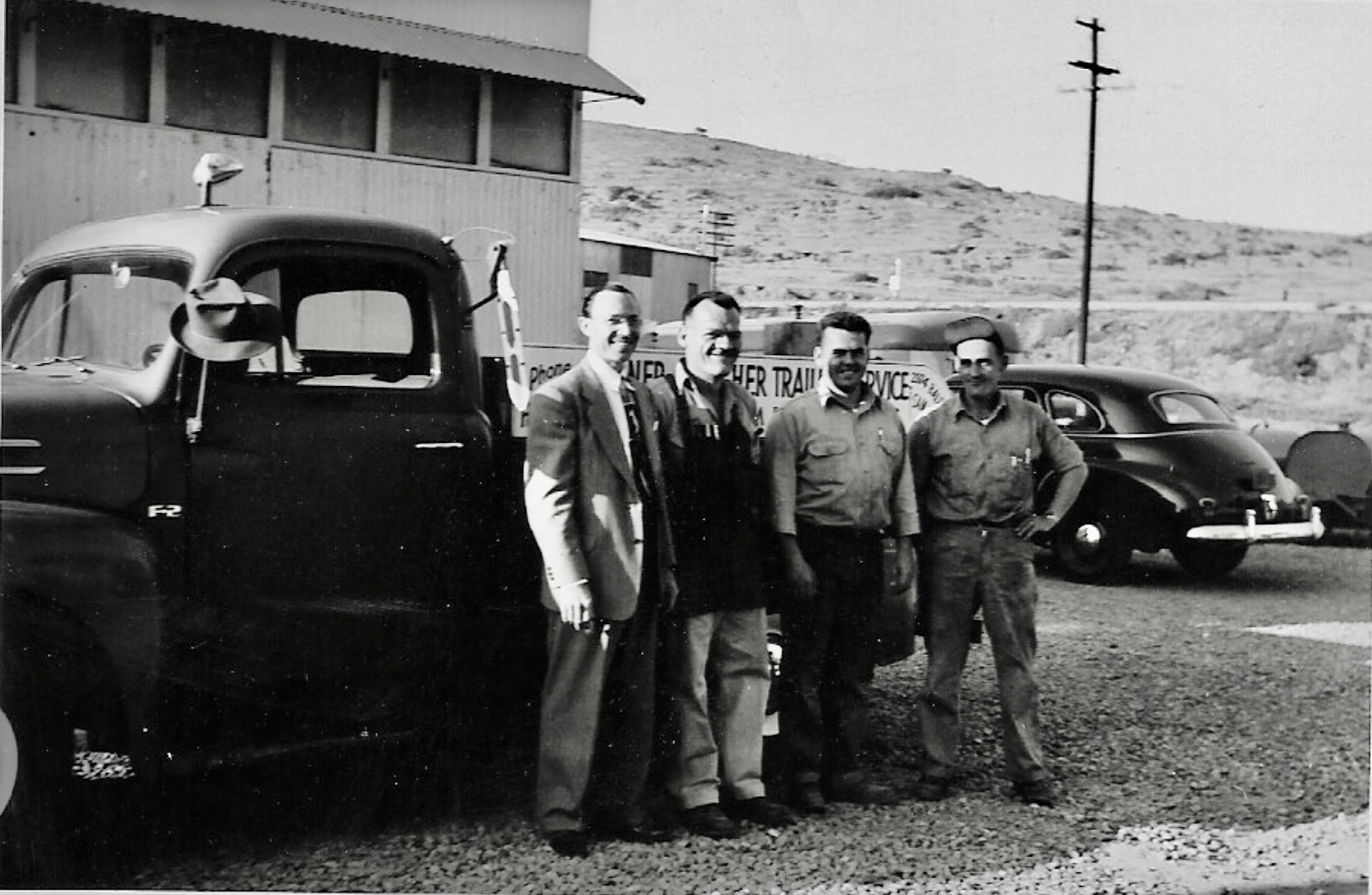
Dick Horner, Steve's great uncle
Summarizing Steve’s information, the photo of the shop still shows the Horner and Thatcher sign. “This is the new location in Pacific Beach at 2974 Balboa Ave. which later was changed to 2974 Garnet as this was considered to be west of the 5 freeway and 92109 [zip code]. This was the original building which was torn down and a new building put up in 1952. The 5 Freeway took 150 feet off the lot, and where this building is standing the new building was pushed [further to] the east. This has to be 1948 when Golem came on board.” He reports he has photos of this same truck with the sideboards repainted Horner Golem from the 50s and 60s long after the trailer was gone. He never saw the original building but did see some of the sheds that remained that were torn down when he was a youngster.
Steve said he dug up some old stuff in his garage from shop documents and some design sketches. He found pictures and drawings in a registered letter that George Horner mailed to himself from the Spring Valley post office on his company’s letterhead envelope. This was regularly done to show the time of build to register the date in those days for trademark purposes. There are three pictures of the 1948 Horner & Thatcher Trailer Boat Prototype believed taken in November of 1947. The trailer had just been painted and not yet registered. There is evidence to support that the trailer was designed to fit an already existing boat (which most likely means only one was ever built). These pictures were taken in Spring Valley, CA, by George Horner himself. There is also an original plan sketch of the boat dated 6/1/47. They were in the envelope George mailed to himself. The trailer was called a Nomad. Chuck had suspected all along the trailer was built to fit a boat. Magazines in those days like Popular Mechanics published DIY plans for similar homebuilt boats.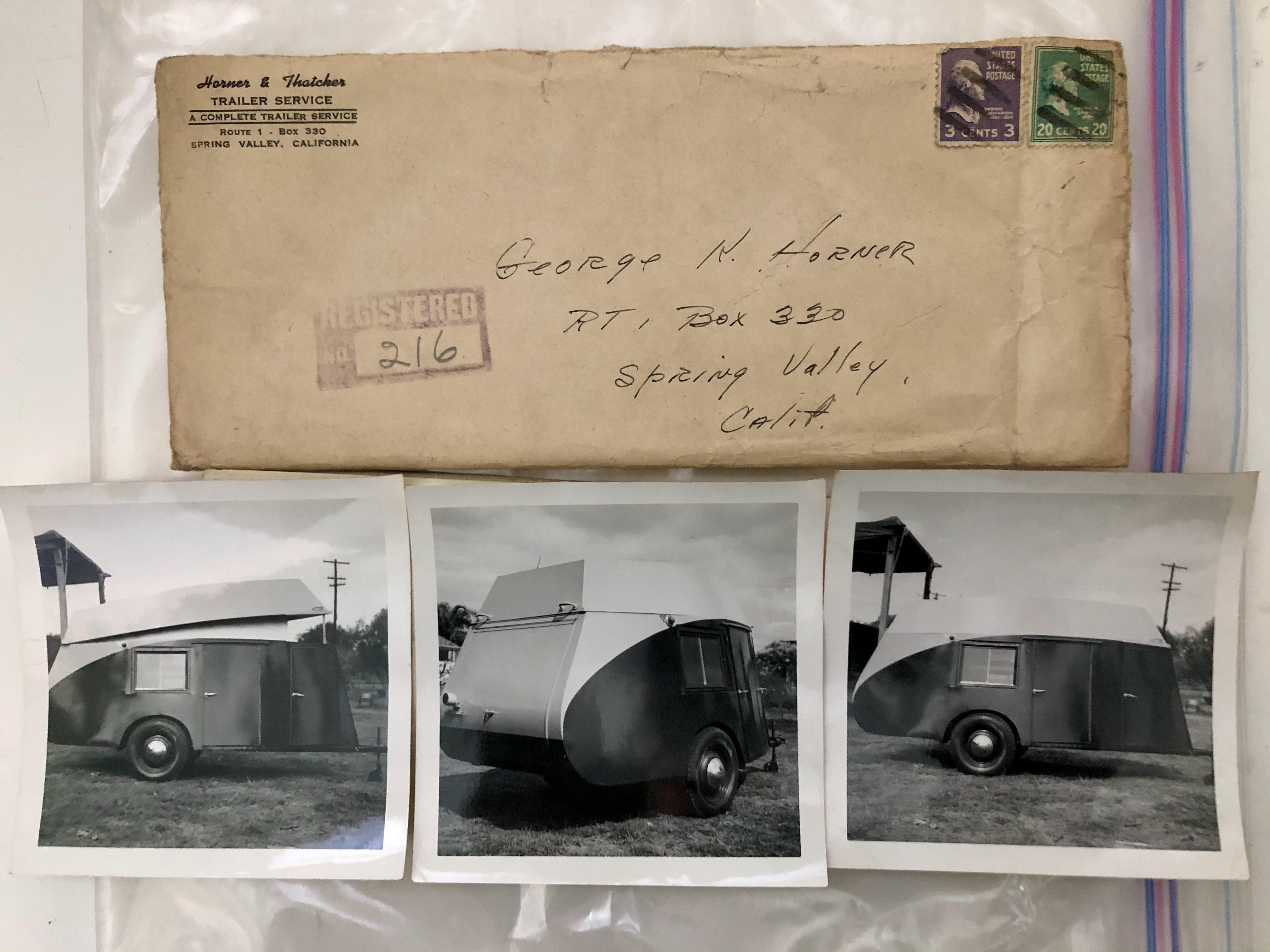
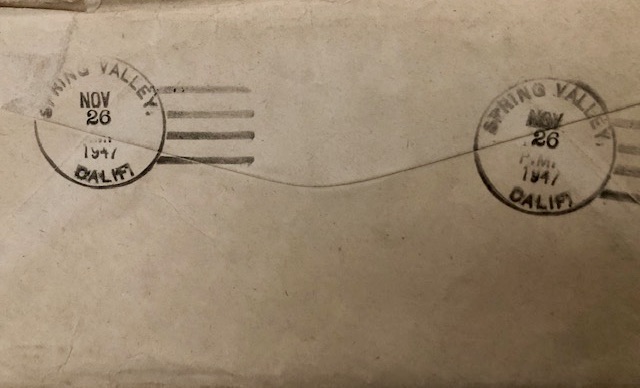
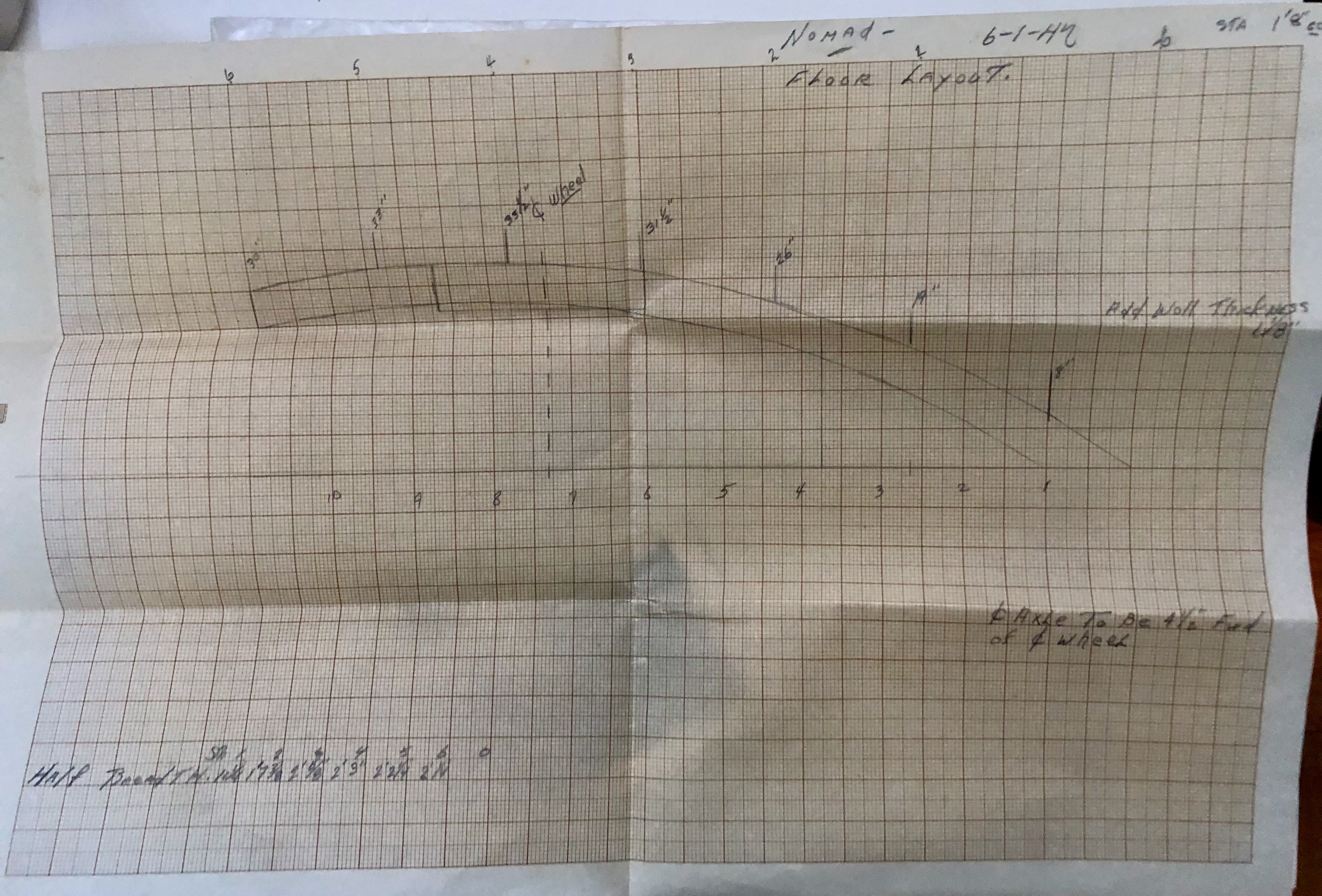
There may be one or two more dots needed to complete this trailer’s history . . . Who had the boat when it was located by a finder and brought to the Simpson’s Landscape Nursery collection?
******************************************************************************************************************************
And on May 7, 2021 with some family members assistance, we were able to finally . . . FLOAT THE BOAT! . . . and Chuck caught one "released" fish at Castaic Lake . . .



Success & Smiles!!!
*******************************************************************************************************************************
More photos of the trailer boat in action:
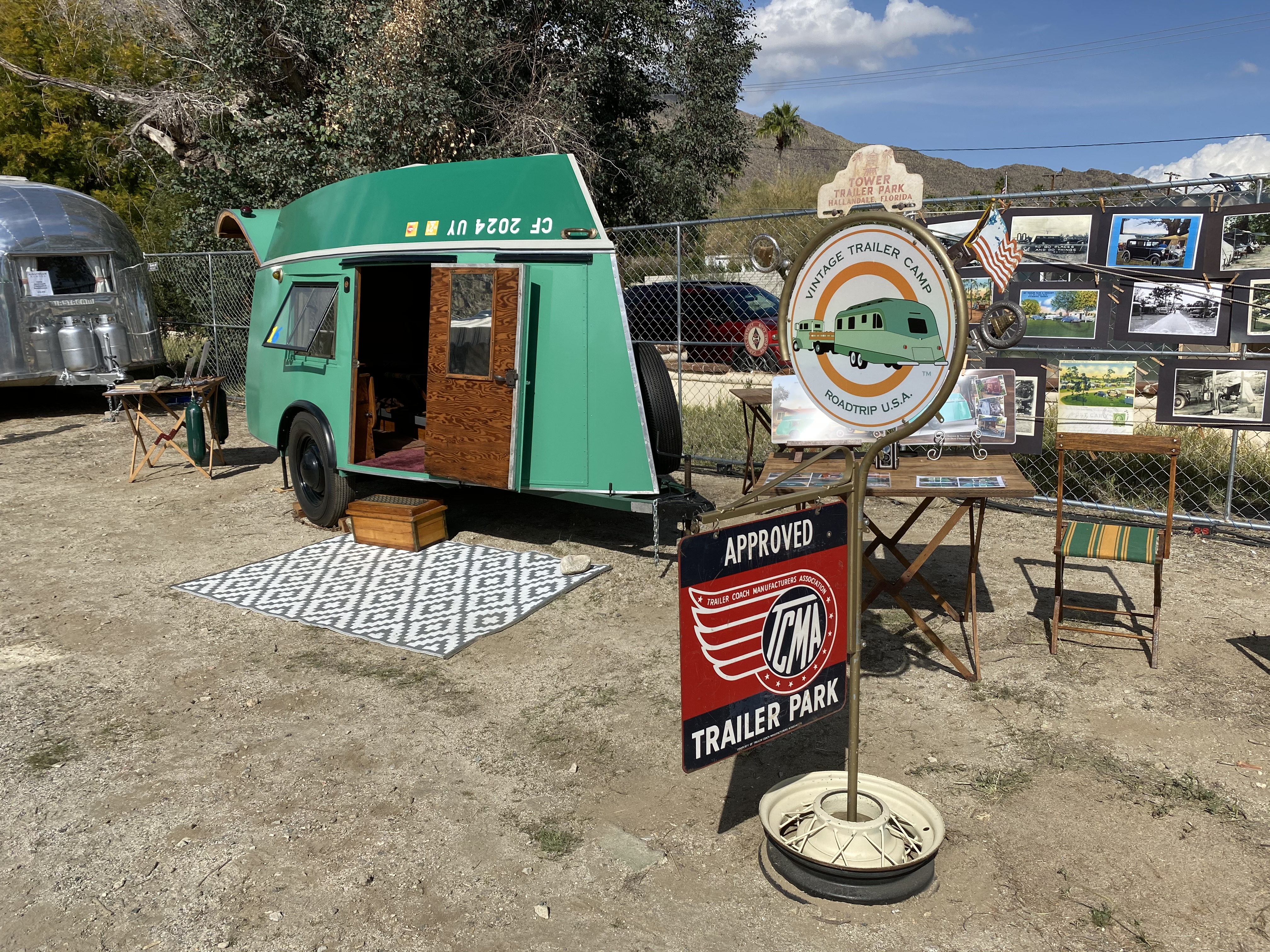
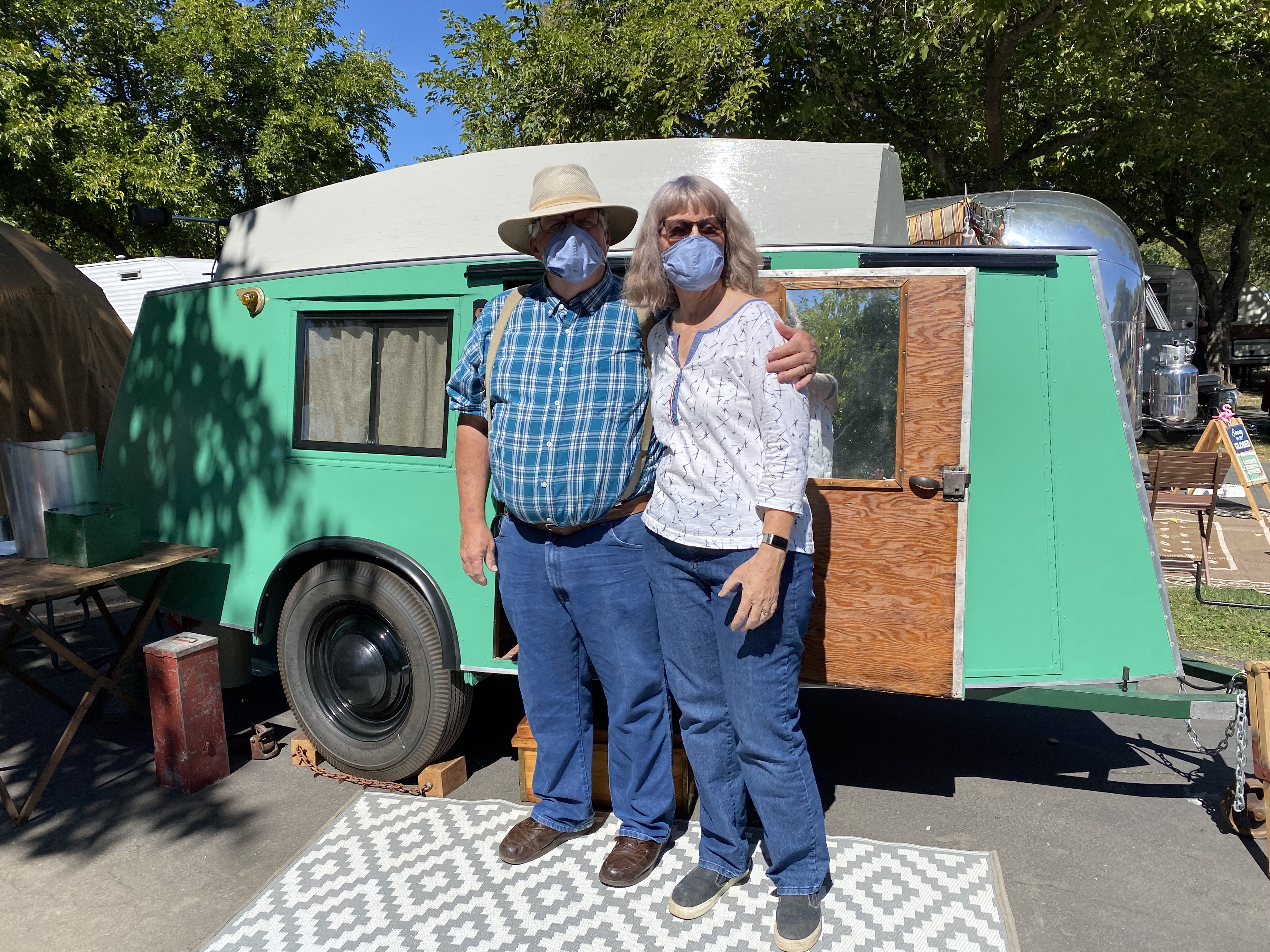

Okay, I could not resist including the next two pictures; we had so much fun as we always do at Paul & Caroline's rallies.

"What brings you to Tara?"
"You, you vixen you."
"Starlett, I love you."
"That, that, that gown is gorgeous."
"Thank you, I saw it in the window
and I just couldn"t resist it."
Went With the Wind, 1976 Carol Burnett Show



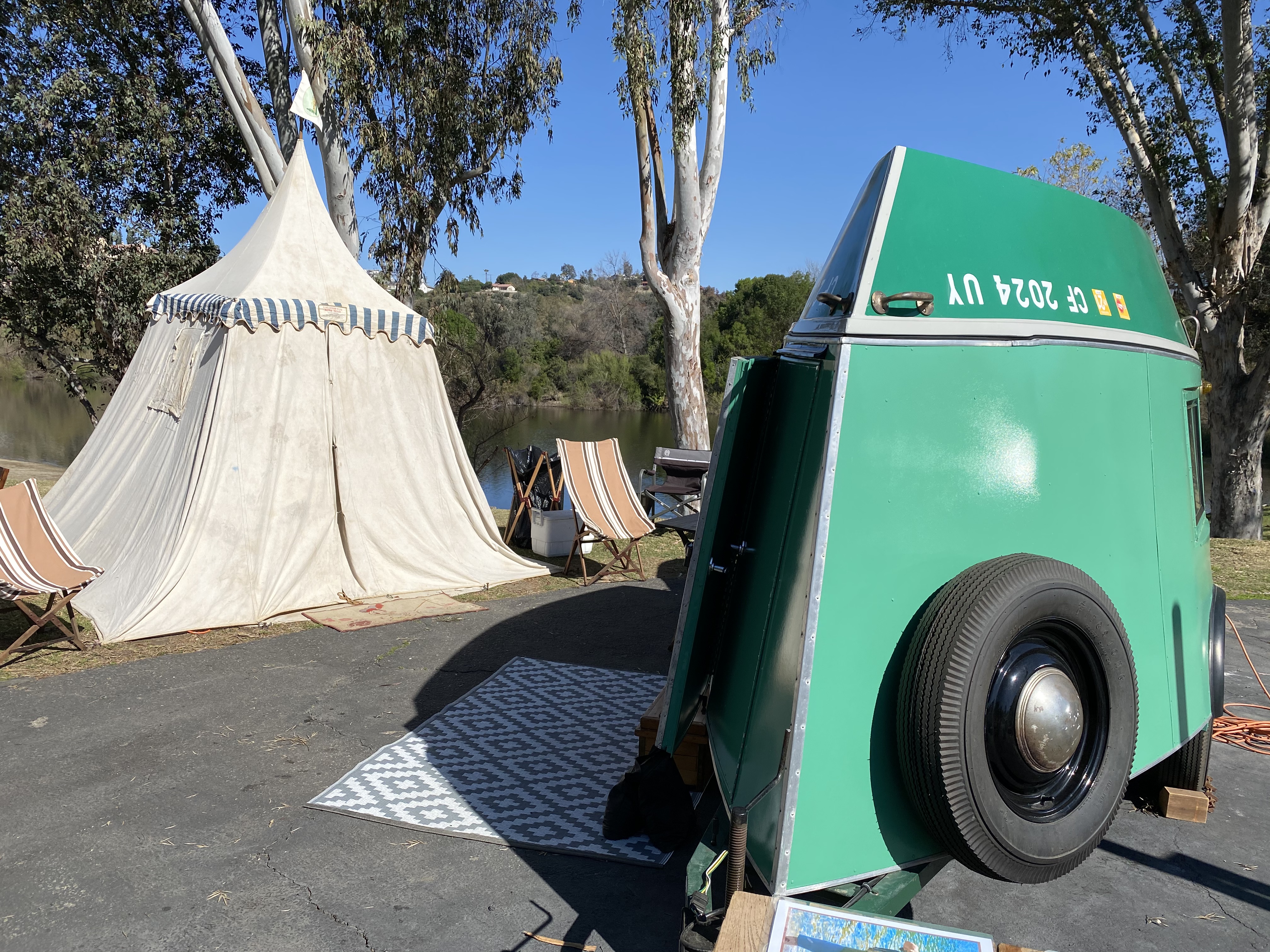

Happy Trailering!
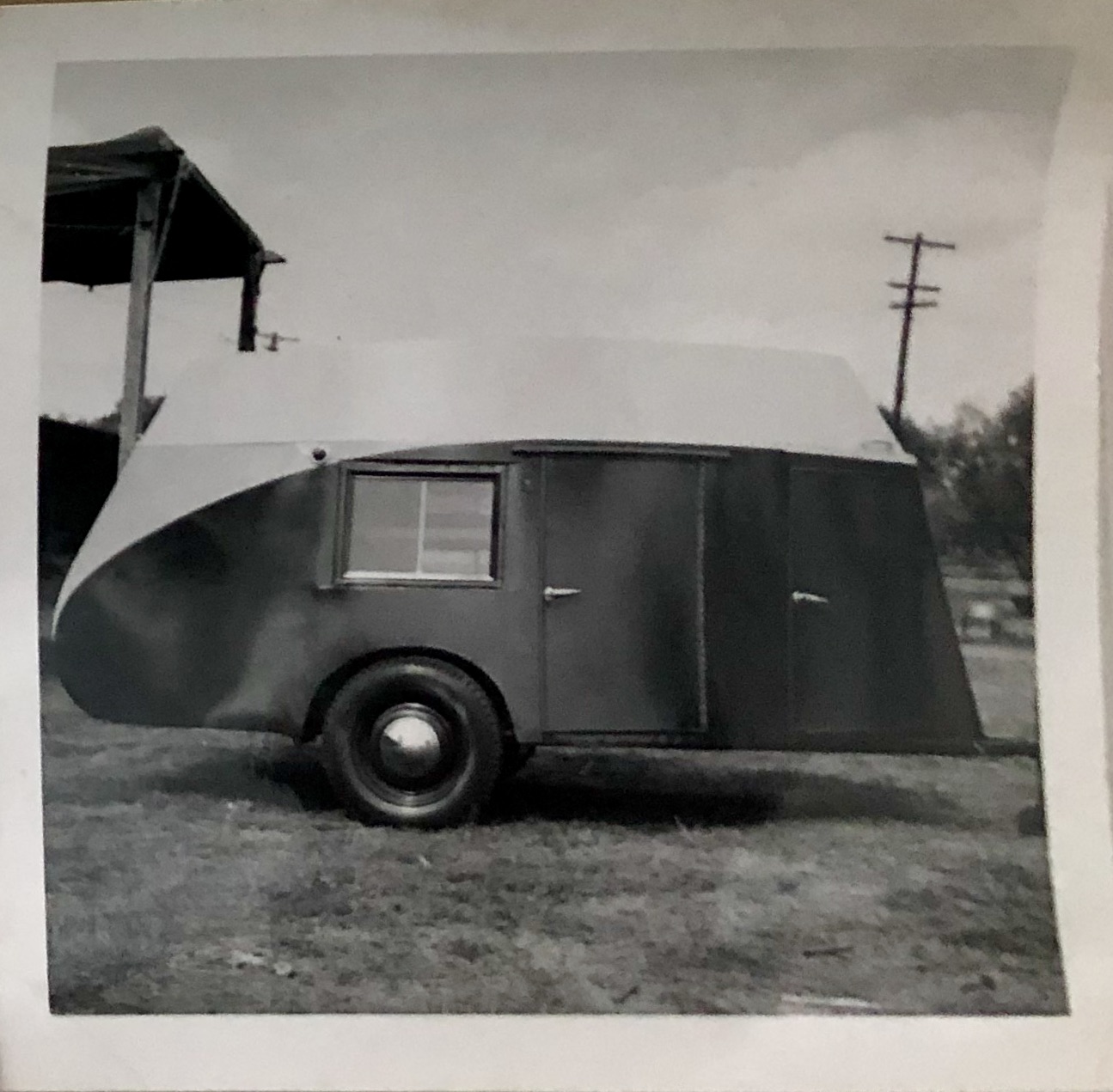

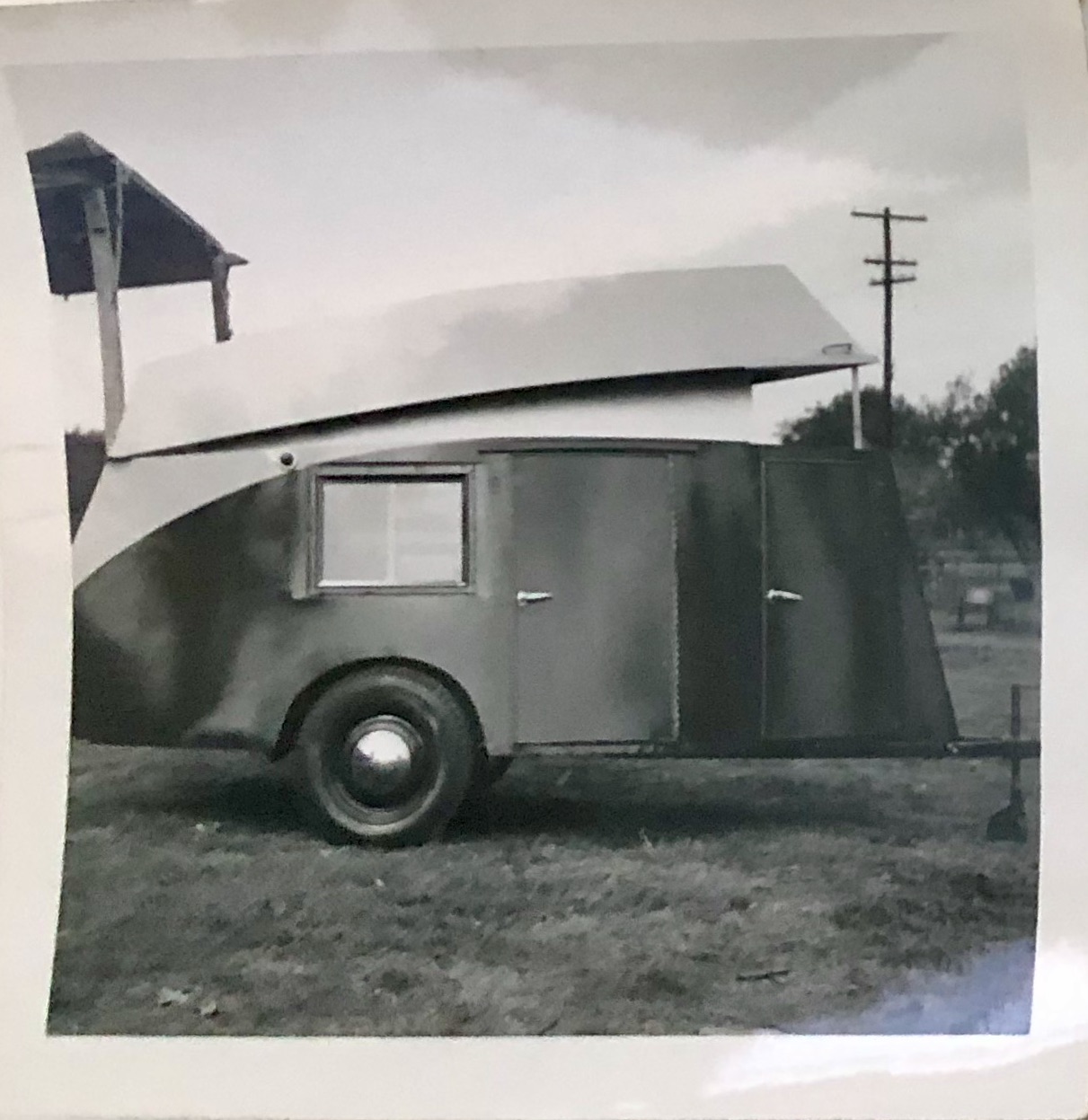
And most likely our last trailer boat update:
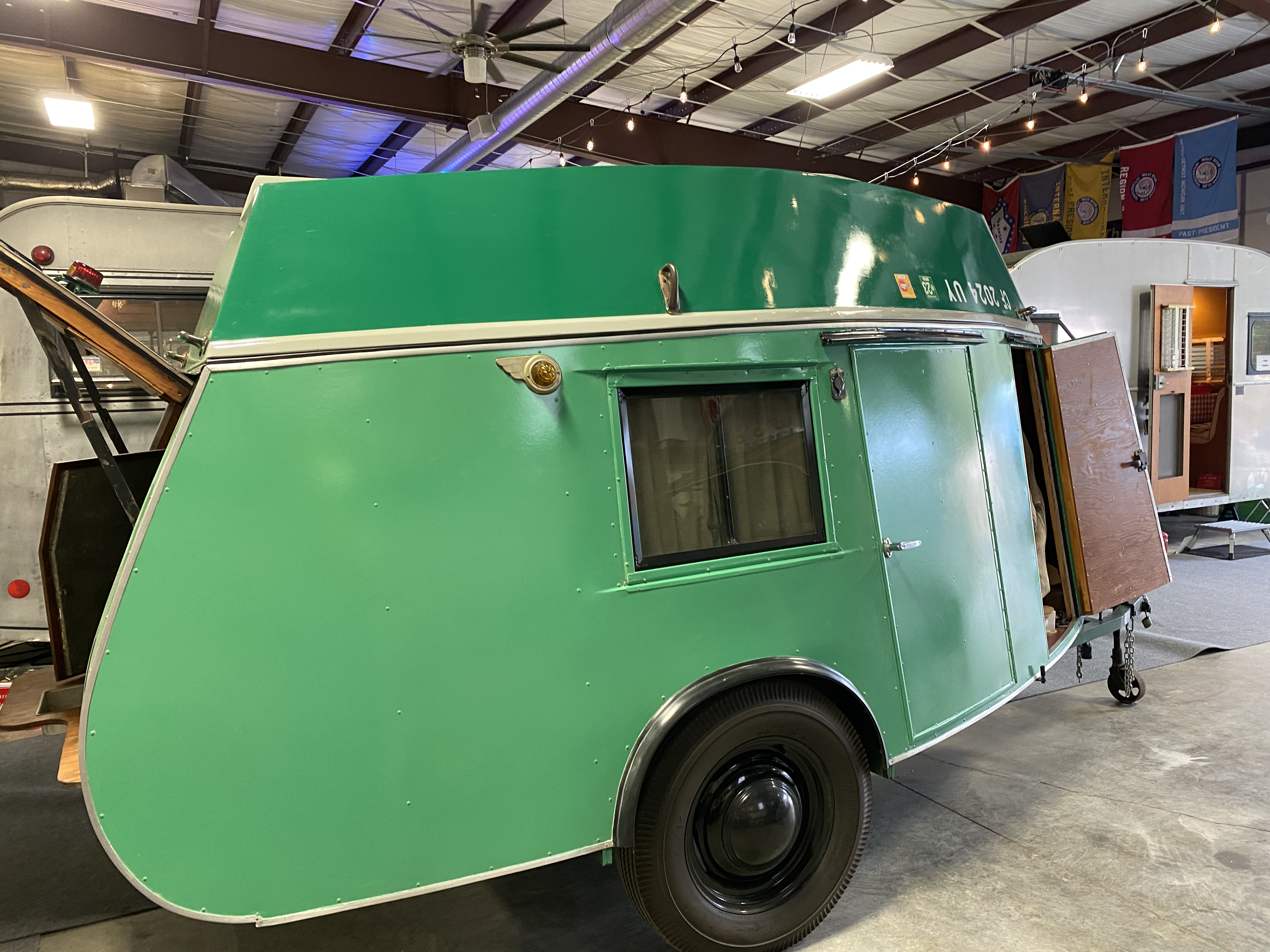
This little gem found its way to a private collection/museum in Little Rock, Arkansas, where it sits happily in a controlled climate environment where all vintage masonite and wood trailer specimens eventually belong -- if you want them to last. It arrived there in April of 2022.